#naky layout
Explore tagged Tumblr posts
Text


⠀𖥻 NAKY fr. TRIPLES
⠀⠀TWITTER LAYOUT ꈍᴗꈍ
⠀
٬٬ 1 icon + 1 header. ٬٬ like ﹠ reblog if you save or use. ٬٬ please don't claim it as yours. ٬٬ credits to @kaiahadxs on twitter.
non–requested!
#naky layout#naky#nakyoung layout#nakyoung#triples layout#triples#kpop layout#kpop#asian layout#rp resources
19 notes
·
View notes
Text



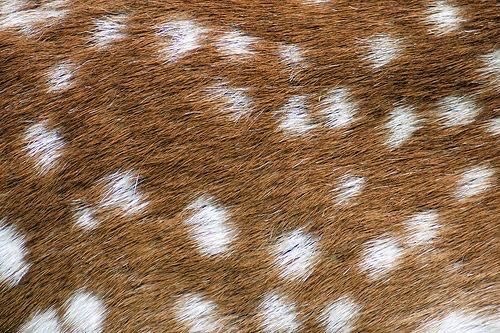

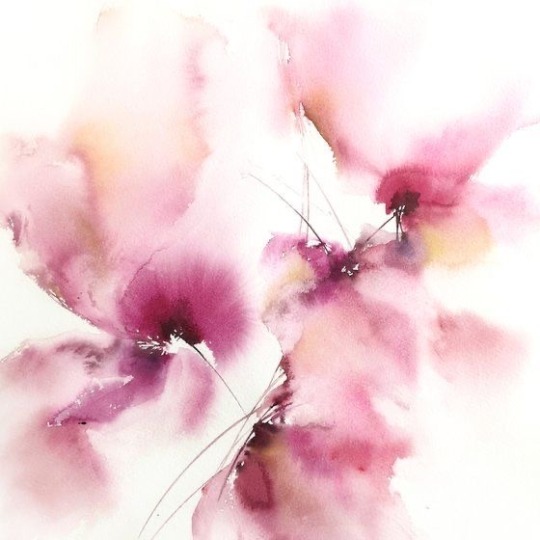


#nakyoung#triples#s7#kpop layouts#kpop icons#aesthetic#moodboard#layout#pfp icons#kpop gg#naky#dark moodboard
26 notes
·
View notes
Text
European Championships Review
Once again this is very late. I wasn’t ready to jump into Europeans after Flight 5342 and then when I was ready to catch up I got a migraine and then when I was ready to write this review I got the flu that everyone is getting right now, so it’s been a little rough but I am ready. Let’s do this.
Men:
Lukas Britschgi (Switzerland): Total Score 267.09 - 8th in the short, 1st in the free. Did not see this coming. I really liked the short here even tho the jumps did not go as planned. The technical elements in the free were the best I’ve even seen from him. Very nice comeback after the short.
Nikolaj Memola (Italy): Total Score 262.61 - 5th in the short, 2nd in the free. I’ve yet to see two clean programs from him this season but omg did he kill this. The 4Lz3T blew me away, but he needs to fix those level 2 spins, but he’s so tall Idk how he’s supposed to fix them lol.
Adam Siao Him Fa (France): Total Score 257.99 - 1st in the short, 3rd in the free. My man was really just throwing himself into all the jumps during the free. Nearly gave me a heart attack. I’m glad that it looks like he’s sticking to SOS in the short. I really really want to see the Dune program clean.
Nika Egadze (Georgia): Total Score 243.87 - 2nd in the short, 8th in the free. It really was looking like he was gonna make the podium but the free betrayed him which is disappointing because I feel like he consistently ends up in 4th place. We need to get him away from Eteri stat.
Matteo Rizzo (Italy): Total Score 241.21 - 4th in the short, 6th in the free. Love the new free program. Really happy that he’s keeping it for the upcoming season. Looking forward to seeing it again when it’s a little more polished. Attempted 2 quads in the free which is a step in the right direction because at his Grand Prixs he was only doing the 4Lo in the free.
Deniss Vasiljevs (Latvia) : Total Score 239.7 - 12th in the short, 4th in the free. NO MORE 4S IN THE SHORT I AM SO TIRED OF THIS. I wish he would stick with his Skate America layout where he did the 3A, 3Lz3T, and 3F. However, his free program was stunning. He sacrificed the stsq for the jumps but there were tears running down my face. I love him.
Women:
Niina Petrokina (Estonia): Total Score 208.18 - 2nd in the short, 1st in the free. I also did not see this coming, but I’m so happy she had her moment here. Her jumps were so solid although that freak stumble in the free gave me a heart attack but I’m glad it didn’t impact her score too much.
Anastasiia Gubanova (Georgia): Total Score 198.61 - 1st in the short, 2nd in the free. Miss girl will really have the most mid Grand Prix season and then go to Europeans and kill it ¯\_(ツ)_/¯ . Glad she was able to do well here but it’s a shame that she’s so inconsistent.
Nina Pinzarrone (Belgium): Total Score 191.44 - 4th in the short, 3rd in the free. Pretty sure she changed her costume for the short and I liked it. I actually like the short way more than I have all season. Still not liking the free tho, which is disappointing because I really do like my little Belgium girl. I thought she absolutely killed it here
Kimmy Repond (Switzerland): Total Score 186.64 - 3rd in the short, 5th in the free. I feel like Kimmy has been fighting hard all season and I’m so disappointed that she’s didn’t make it onto the podium. I really like the short, but I recently saw Gladiator for the first time and now that I have I really do feel like I understand these Gladiator programs better, but I also understand that Kimmy’s Gladiator costume is not very good.
Anna Pezzetta (Italy): Total Score 186.19 - 6th in the short, 4th in the free. Her jumps could not have been bigger even if she tried like OMG. Where did she come from??? She had a handful of mistakes here but I am so impressed with her.
Lara Naki Gutmann (Italy): Total Score 181.51 - 5th in the short, 6th in the free. It’ll be interesting to see the rivalry between Lara and Anna going into next season. But Lara will always be my girl. Still obsessed with the short, but we couldn’t keep it together in the second half of the free which is disappointing. Also, her blue eyeshadow seemed shockingly blue, like I don’t think I’ve ever seen an eyeshadow look so blue in all my life.
Pairs:
Minerva Fabienne Hase / Nikita Volodin (Germany): Total Score 212.48 - 1st in the short, 1st in the free. They serve great face in the short, but the free is a little boring in my opinion. Their 3Tw is so solid.
Sara Conti / Niccolo Macii (Italy): Total Score 206.89 - 2nd in the short, 2nd in the free. Once again I really like their short. They are so fast and their movements are so sharp, but I also feel like their free is bit of a snooze fest. I do not like the song and I don’t like her jumpsuit. I wish everyone would stop doing SBS 3 jump combos because they all look bad.
Anastasiia Metelkina /Luka Berulava (Georgia): Total Score 191.88 - 9th in the short, 3rd in the free. Clawed their way onto this podium by the skin of their teeth. Kept the performance up even tho the short was not going the way they wanted which is great. I’m glad they had a good comeback because they’ve really grown on me this season.
Ice Dance:
Charlene Guignard / Marco Fabbri (Italy): Total Score 212.12 - 1st in the rhythm , 1st in the free. I’m officially tired of the ketchup and mustard program and I never liked the robots program to begin with so it’s a bit rough out here. I love watching them because their technique is stunning but I just really don’t like either one of their programs this season. They better bring out the good stuff next season.
Evgeniia Lopareva / Geoffrey Brissaud (France): Total Score 206.76 - 2nd in the rhythm, 4th in the free. My new favs. I cannot put into words how much I love the Rasputin rhythm dance. It lives rent free in my head 24/7. Their stsq in both the rhythm and free is amazing.
Lilah Fear / Lewis Gibson (Great Britain): Total Score 206.02 - 3rd in the rhythm, 2nd in the free. She had some trouble with the twizzles in the rhythm but other than that I loved it. Beyoncé program also gets me so hyped.
I can’t believe Four Continents is next week! I’m really excited because the lined up is pretty stacked in all disciplines but I’m super excited to see what goes down with the men. Will Kao compete? Will Jun continue his podium streak? Who knows!?!?!
#figure skating#euros 2025#european championships 2025#lukas britschgi#nikolaj memola#adam siao him fa#nika egadze#matteo rizzo#deniss vasiljevs#niina petrokina#anastasiia gubanova#nina pinzarrone#kimmy repond#anna pezzetta#lara naki gutmann#minerva fabienne hase#nikita volodin#sara conti#niccolo macii#anastasiia metelkina#luka berulava#charlene guignard#marco fabbri#evgeniia lopareva#geoffrey brissaud#lilah fear#lewis gibson
3 notes
·
View notes
Photo


i don’t think i ever got around to posting my final setup
#kamen rider zero one#sh figuarts#i also have burning falcon kicking around#but i dont want to redo my display#unless i manage to get my hands on naki's key and figuart#and do a full mbjr layout...?
6 notes
·
View notes
Text
Take Hirako’s Betrayal of Goat
Setup
Throughout the last few arcs of Tokyo Ghoul :re, there were subtle hints that someone from inside Goat was a traitor leaking information. For example, during the Clown Siege Arc Kaneki decides to assist the CCG in killing Clowns before heading out to retrieve rc suppressants for Akira Mado. They finish doing so earlier than expected (only 20 minutes), but despite this V agents have somehow already made it to their location.
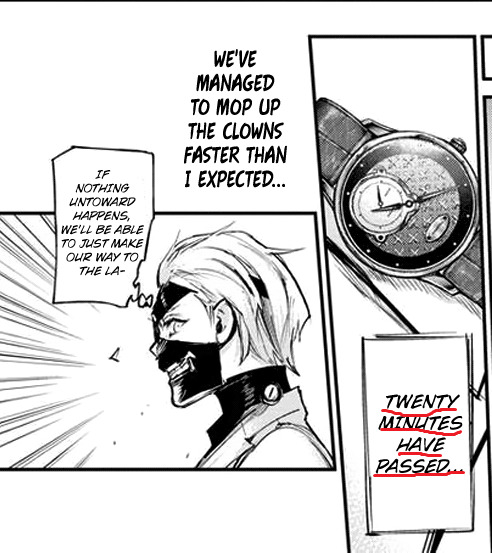

The CCG monitors only detected Goat’s presence when they arrived to fight the Clowns. So, in only the 20 minutes after being made aware of Goat’s presence they somehow made it all the way over to their location (on foot) from wherever they were previously? The only logical explanation seems to be that somebody tipped them off previously and they had men on standby.
Later, after Furuta unleashes the Oggai they destroy Goat’s 3rd base in :re 122. After this event, the Goat members do question if there was a leak.

After being made aware of the Oggai, they believe it was solely due to their sensory abilities that they were able to find the base. However, while this event was being aired on television one newscaster noted that Furuta’s performance lasted online 38 minutes.

What she meant by his “roadside performance” is somewhat vague. Did it take the Oggai 38 minutes to destroy the base in 38 minutes? Given what was shown of their strength it’s doubtful it would’ve taken them that long. So, does that mean it took them 38 minutes to both find the base and destroy it? For the Oggai to use their senses to locate the base they would have to do so on foot. So, they located the base and traveled there on foot in less than 38 minutes? It seems to good to be true that they started their search so close to the base. This again hints that someone leaked information.
Later, in an attempt to infiltrate Goat the Oggai Hajime Hazuki pretends to be a ghoul on the run in order be saved by Naki, who then takes him to Goat’s base in the 24th ward (in :re 127).


However, how could Hajime have known that Goat members would be here? He could’ve used his senses to tell that Ghouls were nearby, but he wouldn’t have been able to know that they belonged to Goat. This again suggests someone leaked information, in this case that someone revealed an area where Goat members would be active.
Later, the CCG attacks the 24th ward base while most of the stronger ghouls are out with a scavenging party. Kaneki considered this possibility, and so he assigned a communication squad led by Kaya Irimi and Enji Koma to the outskirts of the 24th ward. With Irimi’s enormous sensory abilities, she should have been able to detect any incoming attacks, and then the squad could send a transmission to the scavenging party to have them come back to base.
However, this doesn’t happen.

During the original series, after the Anteiku members went to rescue Kaneki Irimi stays outside of the complex they go into. She stays outside and uses her abilities to monitor to movements inside the entire facility.

There’s no way someone whose senses are so vast and refined wouldn’t notice large scale attack coming. The moment she felt the CCG incoming they would’ve sent a transmission. Not only does this not happen, Koma and Irimi’s squad members are shown beheaded.
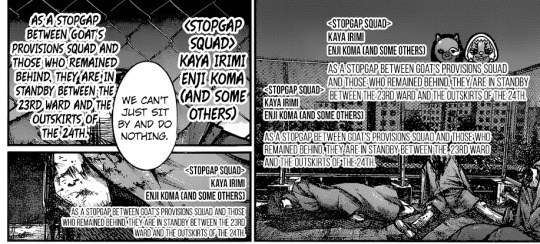
Koma and Irimi aren’t actually among the bodies here as their icons indicate that they are wearing their Devil Ape and Black Dober uniforms, while the corpses are shown wearing dark red robes. However, notice here that the bodies are facing towards the screen (inwards) rather than outwards. Meaning that whoever killed them came from behind, and so whoever killed them wasn’t the CCG who came from outwards.
This could be explain why Koma and Irimi didn’t send transmission to Kaneki. Whoever attacked them from behind undetected could only have come from the direction of the 24th ward (a fellow goat member). So, seeing a friendly face wouldn’t have put them on alert until it was too late. The traitor struck once more.
Finally, after Kaneki’s final battle with Furuta, the latter uses some interesting words when speaking to Kaneki.
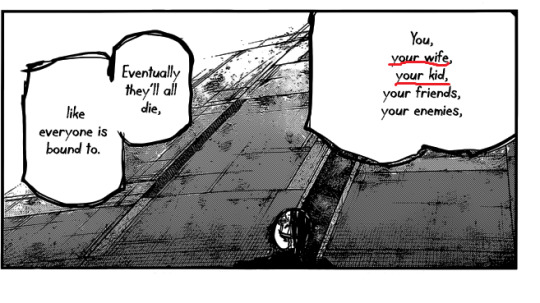
How would Furuta know Kaneki had a wife or kid? Kaneki only married Touka after they decided to hide in the 24th ward. Also, knowledge of her pregnancy only became apparent when they were in the 24th ward as well. So, how Furuta hear? The answer is likely the same as previously: a traitor inside of Goat leaking information.
So far, all these points suggest a traitor inside of Goat was leaking information and working against them in secret. But who is this traitor? There is both symbolic evidence and textual evidence that suggests the identity of the traitor: Take Hirako.
Symbolic Evidence
There is symbolic evidence that ties Take Hirako to Judas Iscariot (the disciple who betrayed Jesus Christ). Judas left the Last Supper early or did not attend at all (depending on the version of the story), and later sold out Jesus for 30 pieces of silver. Later, he hung himself from a tree (thereby breaking his neck).
Just like Judas didn’t attend the Last Supper, Hirako didn’t attend the Christmas dinner at the Quinx Chateau.
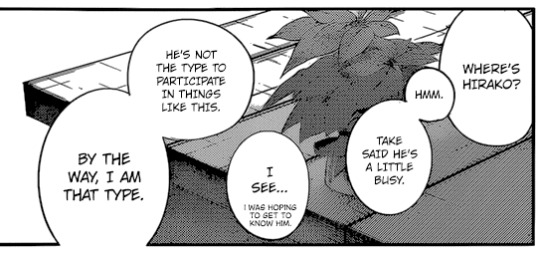
Not only that, but the plant shown in this image (with leaves in circles) looks like it was cut from a Japanese Laurel tree. In Japan, this tree is also known as the Japanese Judas-Tree, which further hints at the Judas connection. In regards to Hirako breaking his neck, there are a number of images in the Tokyo Ghoul calendar (released in 2016) that focus on his neck.
As shown in a post by @akiira-mado:
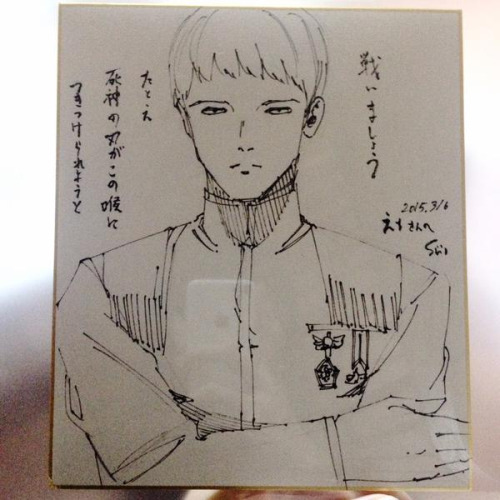
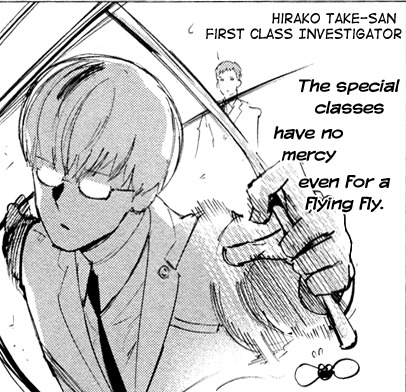
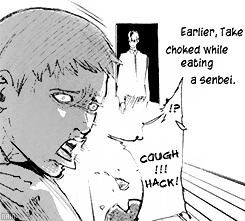
1. “Let us fight. Even if the God of Death will point his blade at my throat.“ 2. CCG’s God of Death killing a fly but it’s a strange composition, slashing X across Hirako’s neck. For such a simple omake, it would have been easy for Ishida to rework the awkward composition differently. 3. Hirako clutching his neck with Arima in the bg observing. “I felt death approaching” is Hirako’s comment about this scene.
Also, in Hirako’s card in the Tokyo Ghoul Trump series, there appears to be a sand dollar in the background.

The five slits in sand dollars are said to represent Christ’s wounds on the cross. So, this is another reference to Judas as he is responsible for Christ’s wounds. Later, Hirako himself is even called Judas when confronted by Hajime Hazuki.

All of this points to Hirako as the Judas of Tokyo Ghoul, but who is the Jesus he betrayed? Throughout the story, Ken Kaneki has depicted with Christian symbolism.
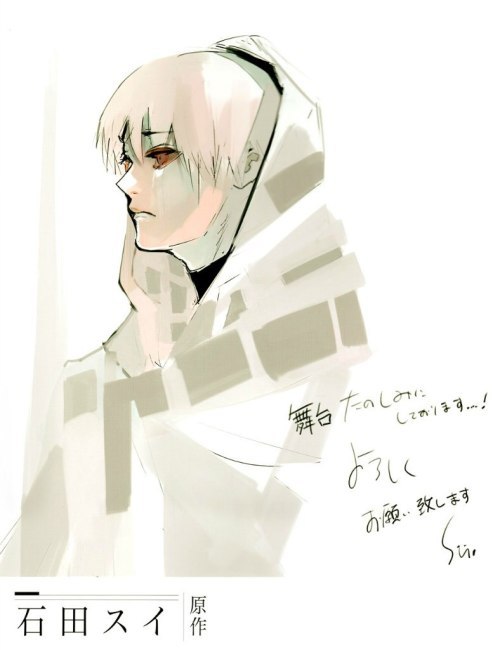

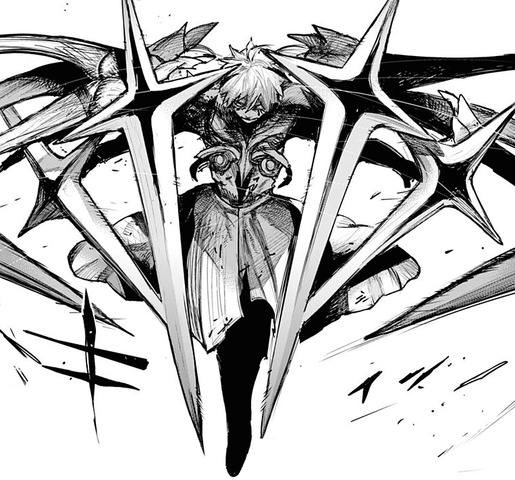
So, this sets up that Hirako is indeed a traitor to Kaneki.
Textual Evidence
Hirako is seen relatively little in the story. However, we know that he generally wears a bland, stoic expression. There are points when this expression breaks, and these point can be telling.

Hirako is typically a very passive individual who waits for orders. However, when they are getting ready to steal rc suppressants from the CCG lab in the Clown Arc, he not only volunteers himself for the lab mission but even states he has the layout of the lab memorized in order to convince Kaneki to bring him along. If you look closely at his left eye, it appears out of focus. Why did Hirako want to go to the lab so much?
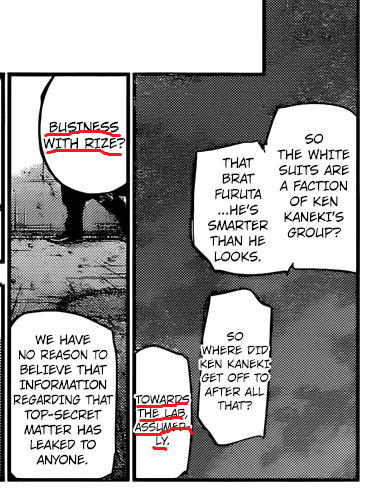
If Hirako was a traitor working for Furuta, then he may have known Rize was at the lab. He specifically mentions he has the layout of the lab memorized, and so if he went he may have tried to steer the group away from the area where Rize was (since she was vital to Furuta’s plan).
Another point made at the beginning of this meta was that somehow Hajime Hazuki knew that Naki was nearby when he pretended to be a ghoul in trouble. Later, when Hirako first confronts Hajime he appears uncharacteristically hostile.
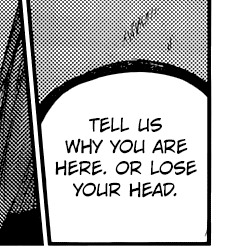
Later, when Kaneki says they will keep him locked up underground he appears worried.
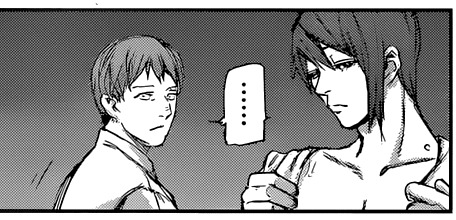
If Hirako was the one who told Furuta where Hajime could find the white suits, then Hajime may know as well. So, he may be afraid of Hajime exposing him.
Finally, there’s Irimi and Koma. They are revealed to have died at some unspecified point, but they are revived as quinques by Akihiro Kanou. In the final battle with V, after Hirako hears that the Black Dobers (Irimi) are coming to the battlefield, he looks to the side nervously.

This is likely because he had a hand in their deaths. Also, despite being used as puppets Irimi and Koma do retain some aspects of their original personality.

And who are the first people they move to attack? Hirako and Ui.

Why they attacked Ui is unclear. During the Rushima Island Arc she seemed to want to fight Ui specifically, and so she may have a grudge against him for something.
However, it’s important to note that they attack Hirako as well, probably to avenge their deaths.
Motive
Since we know so little about Hirako, it’s not really possible to know his motivations for betraying Kaneki and Goat unless Ishida-sensei reveals it to us some day. However, if we take the Judas analogy into account, we remember that Jesus was betrayed for thirty pieces of silver. According to a recent study, 30 shekels of silver in today’s money would be around $200. Imagine betraying Jesus for 200 bucks! So, the few pieces of silver were likely to illustrate the Jesus was betrayed for a petty and insignificant price. So, Hirako’s reason for betraying was likely for a petty reason.
#tokyo ghoul#tokyo ghoul: re#tokyo ghoul meta#tokyo ghoul :re meta#tg#tgre#tg meta#tgre meta#ken kaneki#akira mado#furuta nimura#oggai#hajime hazuki#naki#kaya irimi#enji koma#touka kirishima#take hirako#arima kishou#rize kamishiro#akihiro kanou#ui koori
159 notes
·
View notes
Text
An Angel’s Song
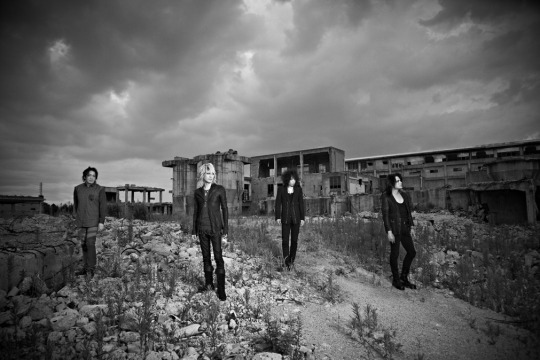
Here I am with a new song analysis in “Lyrical Love”! Today’s subject is a song by the visual kei band D’Erlanger, precisely Angelic Poetry, the fourth track of their fifth album D’Erlanger, come out on 11th November 2009. The song represents a sure link between their early style and their matured one, with a nostalgical sound and a theme which fits very well with their concept.
THE MUSIC
Kyo’s clear vocals open a song featuring a sustained rhythm and a soft melody; then the vocals become even faster and more animated, keeping up a more paced melody, typical of the band’s sound; a nice and catchy ballad, made by nostalgia and romatic notes.
Lyrics (Romaji)
Hirahira to odotteru chō wa doko made iku no?! Hakana-gena tobikata ga totemo utsukushiku mieru Remieru no uta no yō ni maboroshi o aisou ka?! Hitomi wo tojite sagashite mo kimi no egao ga mitsukaranai... Katahō no me o tsumuru mikadzuki ga mitsume teru awaremi ni yoku ni teru yawarakana hikari abise kagen deku utagoe ga utau no wa dare no uta?! Todokanai furenai mono wa naze itooshī no?! In the shadō of the Moon madoromu tenshi ga seppun o segamu kono mune kizu o nameru yō ni aibu o kure nureta tsuki ga utau yoru wa shizuka ni mimi o sumashi eien to randevū - vous aoi kage ga sakaseta hana sawagi tsudzukeru yoru no hikari o ubatte kagayaku kanashimi ni nurete In the shadō of the Moon madoromu tenshi ga seppun o segamu kono mune kizu o nameru yō ni aishite kure In the shadō of the Moon hoshikuzu ga terasu nemura seta setsuna makkana hana bira o fura sete kimi o sō fu... Nureta tsuki ga utau yoru wa shizuka ni mimi o sumashi eien to randevū-vous aoi kage ga sakaseta hana sawagi tsudzukeru yoru no hikari o ubatte kagayaku kimitoboku ga aishiatta ano natsunoyo ukabe naki dashita sora chikaku mo naku tōku mo nai yozora no hate e ikou soko de seppun o kawashite soshite sayonara
Lyrics (Translation)
How far the floating and dancing butterflies have gone?! The way they fly is really beautiful Will you love the vision, similiar to Ramiel’s poem?! I can’t find your smile even if I close my eyes... (I)
The waxing moon staring from a side A soft light which spills similiar to pity Whose is the poem the hidden voice is singing?! Why you don’t touch something beautiful when you reach for it?!
In the shadow of the moon an asleep angel torments for a kiss Give me love so that you lick this wound in the chest (II)
At night, when the waning moon silently strips and listens to the song of eternity and the rendez-vous The flowers, with a bluish shadow, bloomed, take away the nocturnal light, making noise and shining in the sorrow, getting wet (III)
In the shadow of the moon an asleep angel torments for a kiss Give me love so that you lick this wound in the chest In the shadow of the moon the star dust lit up in a sleepy moment Flowing the petals of a bright red flower and thinking about you... (IV)
At night, when the waning moon silently strips and listens to the song of eternity and the rendez-vous The flowers, with a bluish shadow, bloomed, take away the nocturnal light, making noise and shining The sky where we cried in the summer night, when we loved each other At the end of the night sky, which is neither close nor far Let’s go there, kiss and say goodbye (V)
THE WORDS
Written by the singer Kyo, this song summarizes all the most important traits of this band, musically and stylistically, and the sumptuous layout that the text brings in helps better in developing its core subject. Not by case, the album where the song has been released reprises the concept which the band has always brought out, as the content deals with the theme of love, described in many shapes. In particular this song revolves around an angelical poem, which is linked to a definite moment, when the protagonist and his loved one stayed together before getting separated; a single instant, passenger and transient, is here immortalized through the words of the poem and the images brought by them, really strong and evocative. And now... let’s analyze the song!
I) The text starts with a little introduction in English, not mentioned in the official lyrics, and echoing in some parts of the song (Be my way/Stay with me/Pray to me/Be my love). Then, in the proper text, the protagonist is wondering how far the floating butterflies are flying (Hirahira to odotteru chō wa doko made iku no?!, the butterflies represent the souls, likely meaning that his loved one has passed away or even that the protagonist had died too, hinting to a love suicide), defining their flying way beautiful (Hakana-gena tobikata ga totemo utsukushiku mieru); then he asks his loved one if she has experienced the vision similar to the Ramiel’s poem (Remieru no uta no yō ni maboroshi o aisou ka?!, Ramiel is the angel who is told to bring divine visions and to be the guide for the dead people when approaching Heaven), saying that he can’t find her smile, even if he closes his own eyes (Hitomi wo tojite sagashite mo kimi no egao ga mitsukaranai...).
II) The waxing moon is staring at a side, as if it is living (Katahō no me o tsumuru mikadzuki ga mitsume teru), with a soft light, which flows like the piety (awaremi ni yoku ni teru yawarakana hikari abise kagen); then a voice starts singing a love poem and the protagonist asks who is singing it (deku utagoe ga utau no wa dare no uta?!) and wonders why people don’t touch beautiful things when they reach them, likely referring even to himself (Todokanai furenai mono wa naze itooshī no?!); in the shadow of the moon, an asleep angel, another girl, is tormenting him for a kiss (In the shadō of the Moon madoromu tenshi ga seppun o segamu kono) and he asks her love, providing that his wound in the chest can be healed (mune kizu o nameru yō ni aibu o kure).
III) At night, when the waning moon strips quietly, listening to a song of eternal love made in a rendez-vous (nureta tsuki ga utau yoru wa shizuka ni mimi o sumashi/eien to randevū-vous), the flowers, dyed by a bluish shadow, a cold color, linked to pain, take away the nocturnal light, which was making a noise which overcomed sorrow and getting wet by the protagonist’s tears (aoi kage ga sakaseta hana sawagi tsudzukeru yoru no/hikari o ubatte kagayaku kanashimi ni nurete).
IV) After the repetition of the second part of the second sequence, the moon is once again featured, where its shadow sees the presence of star dust, lighting up everything in a sleepy night (In the shadō of the Moon hoshikuzu ga terasu nemura seta setsuna), flowing itself in the petals of a bright red flower, symbol of a passionate love, which leads the protagonist to think about his loved one (makkana hana bira o fura sete kimi o sō fu...).
V) Following the repetition of almost all the third sequence, the final part sees the sky where the two lovers cried in a summer night, where they loved each other (kimitoboku ga aishiatta ano natsunoyo ukabe naki dashita sora chikaku), a sky which is neither closer nor far (mo naku tōku mo nai yozora no hate e ikou), where they choose to go, to love each other and to say goodbye (soko de seppun o kawashite soshite sayonara).
A melting and passionate story between two lovers, trapped in the eternity by a love poem, rich of colours and images; D’Erlanger draw from what they can do best, in a nostalgical melody, filled by feelings and thoughts which will never die.
That’s all folks! See you with a new review in “Let’s Listening to”!
Thanks for the reading!
#d'erlanger#jrock#visual kei#angelic poetry#romantic#nostalgia#music#night#angel#eternity#lyrical love
3 notes
·
View notes
Text
Nampō Roku, Book 2 (41): (1587) Sixth Month, Thirteenth Day, Morning.

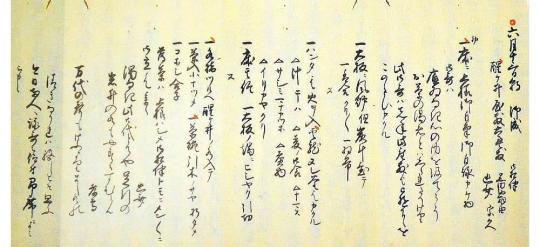
[The entry of this chakai from the Enkaku-ji manuscript of Book Two of the Nampō Roku.]

41) Sixth Month, Thirteenth Day; Morning¹.
◦ O-nari [御成]².
﹆ The six-mat room in the detached [tea] complex at the Same-ga-i [醒ヶ井], [in Kyōto]³.
◦ The Attendants⁴: Kuroda kageyushi [黒田勘解由]⁵, Yūsai [幽齋]⁶, Sōkyū [宗久]⁷.
Sho [初]⁸.
﹆ In the toko, a scroll [featuring] a poem, written and composed, by Lord [Hideyoshi]⁹.
[Hideyoshi’s] verse: soko-i naki kokoro no uchi wo kumete-koso ochanoyu-sha to ha shirare-tari keri [底ゐなき心の内を汲てこそ、お茶の湯者とハしられたりけり]¹⁰.
With respect to this poem, it had been written last year, during [Hideyoshi's] visit to this same room¹¹.
◦ On an ō-ita [大板], the furo; however, only the [unlit] charcoal was placed [in the furo]¹².
◦ Kōgō guri-guri [香合 クリ〰]¹³.
◦ Habōki [羽帚]¹⁴.
Su [ス]¹⁵.
◦ Using a handa [ハンダ], the fire [was brought out from the preparation area and] put into [the furo]¹⁶. [Then] the damp unryū-gama was [brought out and] rested in [the furo]¹⁷.
▵ Shiru hiba [汁 干ハ]¹⁸.
▵ Mugi-no-gohan [麥ノ御食]¹⁹.
▵ Namasu [ナマス]²⁰.
▵ Sashimi mana-katsuo [サシミ マナカツホ]²¹.
▵ Ni-mono [煮物]²².
▵ Iri-kaya ・ kuri [イリカヤ ・ クリ]²³.
[Go [後]²⁴.]
◦ The toko remained as it was²⁵.
◦ On the side of the ō-ita, the hishaku [ヒシヤク], hikkiri [引切]²⁶.
Su [ス].
﹆ Mizusashi tsurube [水指 ツルヘ], with water from the Sanme-ga-i put into it²⁷.
◦ Chaire ko-natsume [茶入 小ナツメ]²⁸.
﹆ Chawan Hikigi-no-saya [茶碗 引木のサヤ], ori-tame [折タメ]²⁹.
◦ Koboshi gōsu [コホシ 合子]³⁰.
[When the service of koicha was finished³¹,] usucha was first [prepared] by Lord [Hideyoshi]; after which each of the attendants took a turn at preparing [a bowl of usucha]³².
Yūsai [offered the following poem]: nigori-naki kono mi-yo tote ya ashi-biki no yuwa-i no mizu mo yasuku-sumuran [濁なき此御代とてや足引の巖井の水もやすくすむらん]³³.
[And] Yoshitaka [孝高]: yorozu-yo no koe mo kyō yori mashi mizu no kiyoki nagare ha taeshitozo mou [万代の聲もけふよりまし水の、清きなかれハ絕しとそ思ふ]³⁴.
On this occasion, immediately after composing their poems, the two people intoned them [for Hideyoshi's enjoyment]³⁵.
_________________________
¹Roku-gatsu jū-san nichi, asa [六月十三日、朝].
The date was July 18, 1587, in the Gregorian calendar. The rainy season generally ends around this time of the year.
²O-nari [御成].
Hideyoshi had returned from Kyūshū, to rest during the spell of intensely hot weather that follows the end of the rainy season.
³Same-ga-i yashiki roku-jō-shiki [醒ヶ井屋敷六疊敷].
The Same-ga-i [醒ヶ井] was a well that had been famous for the quality of its water at least since the Heian period*. Also, it is said that this was the well whose water Shukō preferred for chanoyu.
Since the water was popular with those people who practiced chanoyu in Kyōto, a building had been erected in the compound that housed the well†, containing a shoin of perhaps 8-mats (with an additional raised section of four-mats, two of which were on a higher level, serving as a jō-dan [上段], the seat for a nobleman)‡, and a tsugi-no-ma of six-mats (at the bottom of the sketch, which is where the present chakai took place).
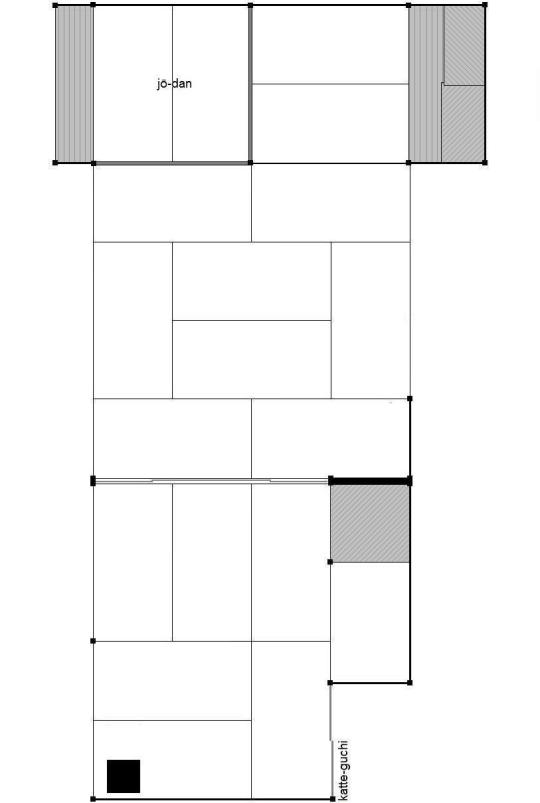
Perhaps, since both Hideyoshi and Rikyū preferred a simpler approach to the service of koicha, the six mat room was used for the first part of this chakai; and then (according to notes left by Imai Sōkyū, who was one of the guests) moved on to the shoin for usucha afterward. The location of the ō-ita is shown -- at the bottom left of the sketch. __________ *In the earliest accounts of this well, it is denominated Sameuji-i [佐女牛井], alternately pronounced Samegu-i (the well, or its neighborhood, occasionally figures in poetry). The name was derived from its location (beside the Sameuji-koji [佐女牛小路], which runs east to west). The modern address (the well has long since vanished) is given as Horikawa-gojō [堀川五条] in Kyōto (the well was located near the south-west corner of this major intersection; though at present there is only a memorial stone to mark the spot).
†The compound used for this chakai may have been erected by (or for) Hideyoshi, since, between the late fifteenth century and 1587, the rare mentions of a yashiki in the same compound with the Same-ga-i being used for chanoyu suggest that these tea-related rooms consisted of a 4.5-mat chaseki, a katte, and a mizuya (on the veranda attached to the katte).
‡The actual details of this structure have been lost, beyond what is said in the two documents that address it -- the present kaiki, and the entry in Imai Sōkyū's chanoyu diary. The sketch is based on the layouts of similar tea complexes of this size that are better documented from that period.
See, however, footnote 31 for a discussion of the reliability of Sōkyū's chanoyu diary.
⁴O-shōban [御相伴].
This refers to the other guests who accompany an important person. In addition to being his fellow guests, they also attend upon him, and assist him, when necessary, throughout the gathering.
⁵Kuroda kageyushi [黒田勘解由].
This was Kuroda Yoshitaka [黒田孝高; 1546 ~ 1604], an important daimyō, who first served Oda Nobunaga. Later he was a major strategist and adviser of Hideyoshi (joining Hideyoshi's camp for the battle of Yamazaki)*. He is better known to Westerners (especially in the context of chanoyu studies) as Kuroda Josui [黒田如水] -- from the name he used during his retirement, Josui-ken [如水軒]†.
Yoshitaka was also (albeit briefly) a convert to Christianity†, in which context he was known as Dom Simeão (Don Simeon [ドン・シメオン])‡. His retirement from public life was in response to Hideyoshi's expulsion edict against the Christians -- which (in a parallel case to that of Hosokawa Yūsai) did not completely debar him from participation in certain aspects of public life. __________ *It has been suggested that part of the reason for Hideyoshi's fear of Kuroda Yoshitaka was precisely because of the latter's intelligence and acumen in military matters -- though Yoshitaka seems to have tried to downplay his abilities -- and, specifically, to Hideyoshi's debt to Yoshitaka regarding the victory at Yamazaki. (According to some scholars, Hideyoshi feared that, if Yoshitaka ever turned into an enemy, he would use his abilities to overthrow Hideyoshi. Hideyoshi's unease was further exacerbated by Yoshitaka's closeness to Sen no Rikyū -- and his resulting opposition to the invasion of Korea, which was intended only to lift Hideyoshi onto the Chinese throne.)
†The only way to “officially” retire from the consequences of ones position was to shave ones head and (at least nominally) take Buddhist orders -- become nyūdō [入道] (then as now there were sympathetic monks who would be willing to accept an honorarium without demanding that the candidate do more than cut off his hair and simplify his style of dress). Going through the form would have had no real impact on his Christian faith; it just freed him from his responsibilities to Hideyoshi, and to his position. (In the same way, Hosokawa Fujitaka was able to avoid having to side with Akechi Mitsuhide -- whose son and heir was married to Fujitaka's son -- in the aftermath of Mitsuhide's treachery, as the norms of the period fully dictated he had to do, by shaving his head and becoming nyūdō.)
Kuroda Yoshitaka retired in 1587 (and, perhaps for the “second time,” in 1589); his full Budhist name (hō-myō [法名]) was Josui Ensei [如水圓清]. It is said that Josui may have been chosen because the pronunciation was similar to Josué (the Portuguese form of Joshua), in the same way that another Christian daimyō of his time, Naitō Tadatoshi [内藤 忠俊; ? ~ 1626] took the name Jo-an [如安] because of the similarity to the Portuguese name João.
‡His decision to convert seems to have been the result of his observations of the honorable behavior of the Christian community in Kyūshū during the recent campaign.
⁶Yūsai [幽齋].
This was the (former) daimyō and literary scholar Hosokawa Fujitaka [細川藤孝; 1534 ~ 1610], who was known as Hosokawa Yūsai [細川幽齋] after his “retirement” from secular life following Akechi Mitsuhide's attack on Nobunaga at the Honnō-ji in Kyōto*. Fujitaka was originally a champion of the Ashikaga shōgunate, though he later offering his allegiance to Oda Nobunaga; and, subsequently, to Hideyoshi (as Nobunaga’s successor)†.
As a literary scholar Hosokawa Fujitaka’s fame is well known. He was also an intimate colleague -- and friend -- during Rikyū’s years of service to Hideyoshi‡. ___________ *After Nobunaga’s seppuku, rather than join Akechi Mitsuhide (to whose daughter Fujitaka’s son was married) as custom demanded, Hosokawa Fujitaka decided to shave his head and became nyūdō [入道], taking the name Yūsai on this occasion. (With this act, he surrendered his status as a daimyō to his son -- who was under no obigation to do anything, with respect to Mitsuhide and his plot.)
†Hosokawa Fujitaka’s refusal to participate in the battle of Yamazaki probably helped to secure the victory for Hideyoshi. As a result, though Fujitaka was technically retired, he remained active both as a political and cultural advisor to Hideyoshi to the end of his life (for which Hideyoshi rewarded Fujitaka with an income and land in Yamashiro Province in 1586, which he doubled in 1595).
Nevertheless, Fujitaka supported Tokugawa Ieyasu (perhaps due to a personal dislike for Ishida Mitsunari and his schemes, which resulted in the death of Fujitaka’s son’s wife and granddaughter), for which the family was honored by the Tokugawa bakufu.
‡Which support persisted even after Rikyū’s death: the reason why it was his son who went to the bank of the Yodo River to “see Rikyū off” (when he was sent back to Sakai to await his death sentence) was not because of a lack of affection, but so that Fujitaka would be in a position to ward off any attacks (on both Rikyū, and Fujitaka’s own family) from Hideyoshi which this gesture of esteem may have precipitated.
⁷Sōkyū [宗久].
This was Imai Sōkyū [今井宗久; 1520 ~ 1593], who was said to be “the other one” of Jōō’s two outstanding disciples*.
Sōkyū was married to Jōō’s daughter, and assumed the guardianship of Jōō’s son Sōga [宗瓦; 1550-1614] (who was just six years of age at the time of his father’s death).
At the time of this chakai, the relations between Sōkyū and Rikyū were still more or less cordial, with the main source of conflict between them being competition for Hideyoshi's favor†. ___________ *The first was, or course, Rikyū.
†The primary cause of the bad blood between Rikyū and Sōkyū seems to have arisen because Rikyū disagreed with Sōkyū over how he was managing Sōga’s (Jōō’s son) affairs.
Sōkyū seems to have taken charge of Jōō’s extensive collection of meibutsu utensils shortly after Jōō’s death, which he said was intended both to safeguard them (as Sōga’s inheritance), as well as (in certain cases) reimburse himself for the added expenses placed on his household by the boy’s upbringing. Rikyū, meanwhile, believed (and made it publicly known) that, in his opinion, Sōkyū was simply enriching himself -- both monetarily and with respect to his reputation as a tea master -- at the boy’s expense. (It must be remembered, with respect to meibutsu utensils, that ownership implied that the owner also had been initiated into the secrets of their use -- and, indeed, it was just this fact on which not only Jōō’s own reputation, but eventually that of Sōkyū as well, had been based.)
Rikyū’s own densho addressed to Sōga, meanwhile, suggests that, in his opinion at least, Sōkyū was not doing a very good job at educating the young man in the details of chanoyu that had been handed down by Jōō, but rather was schooling him in Sōkyū’s own version of the practice (which seems to have remained faithful to the style of chanoyu popularized by Jōō during his middle period) . Sōkyū’s way of practicing chanoyu (as the leader of the machi-shū faction that was increasingly opposed to Rikyū’s simplifications) can be identified with what is now called the machi-shū style of tea -- which passed into the modern world through Sōtan and his descendants. The difference between Sōkyū’s “machi-shū style” and Rikyū’s chanoyu can be seen clearly by comparing Rikyū’s densho with the modern Senke version of chanoyu.
After Rikyū’s death, Sōkyū was one of the leaders of the group that sought to eradicate all traces of Rikyū’s teachings from the practice of chanoyu -- and, given the subsequent and lingering animosity between the Sen families and Rikyū’s own writings, we might say that Sōkyū was more successful in leaving his stamp on chanoyu than he could ever have dreamed possible.
⁸Sho [初].
The shoza.
With respect to kane-wari:
- the toko held only a kakemono (of one of Hideyoshi's waka-kaishi [和歌懐紙]), and so was han [半];

- the room had the furo, resting on an ō-ita, along with the kōgō and habōki (as shown above)*: however, since the kōgō and habōki did not contact any of the kane, the ō-ita furo, and therefore the room itself, counted as han [半].
Han + han is chō, which is appropriate for the shoza of a chakai held during the daytime. __________ *I have shown the ō-ita on the left side of the utensil mat because it seems that Hideyoshi strongly objected to its being placed on the right (since the furo tended to obscure his view of what the host was doing).
After the destruction of the Ishiyama Hongan-ji (and the subsequent appropriation of the site for Hideyoshi’s Ōsaka castle), Hideyoshi became perennially fearful that secret followers of that sect (which seems to have included most -- if not all -- of the Sakai chajin) might attempt to assassinate him (one of this radical sect’s preferred methods of eliminating their opponents apparently included the use of poison). He, therefore, remained fearful of poison to the end of his life.
If the furo is placed on the right, however, the arrangement would be as shown below.
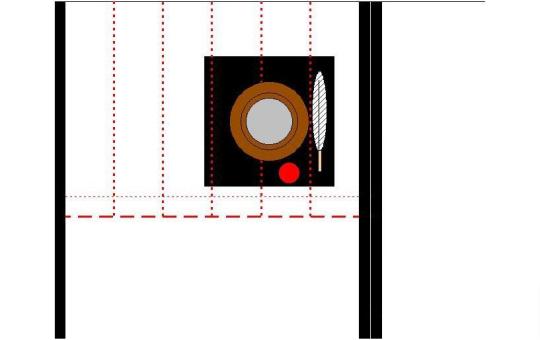
In this case, the habōki and kōgō would have been placed on the right side of the furo, as shown. The considerations related to kane-wari would be the same as described above, in the body of this footnote.
When the room had a tsuri-dana attached to the outer wall, there was no help but to put the furo on the right side of the mat (though at least some of the machi-shū started placing the furo on the left -- albeit moving it a little closer to the center of the mat so that the mouth of the kama, at least, was not under the tana -- and this practice has been perpetuated by some of the modern schools). And while the same orientation was also supposed to apply when the room had a dōko (when taking things out of the dōko, they were not supposed to be moved across the front of the furo, for fear of causing inadvertent damage), it is possible that the objections had less force with Hideyoshi in this setting, and the furo may have been placed on the left (in which case the host may have limited the number of things placed in the dōko -- such as by arranging the mizusashi and chawan and chaire on the mat, rather than keeping them in the dōko until needed as was originally the case.) This is also the reason why most modern schools are generally unsure about how to use the dōko.
Ultimately, Hideyoshi’s objection is the reason why, even today, the modern schools continue to teach that the furo should be placed on the left side of the utensil mat.
⁹Toko ni ue-sama o-ji-hitsu o-ji-ei kakemono [床ニ 上樣御自筆御自詠カケ物].
This means that the scroll that was displayed in the tokonoma consisted of a waka-kaishi [和歌懐紙]*, the verse having been both composed (ji-ei [自詠]), and written (ji-hitsu [自筆]), by Hideyoshi during a visit to the Same-ga-i the year before.
This scroll is not known today. __________ *The reader should not confuse kaishi [懐紙], as used here, with the small packet of paper that is used in chanoyu when eating kashi, and so forth. Kaishi, here, refers to something much larger (perhaps similar to the packet of folded paper used as a kami-kamashiki [紙釜敷] today -- though generally folded only in half, not into quarters as is done when the pack of paper will be used as a kamashiki).
Kaishi was originally a sort of note paper that persons of the higher classes carried on their person, on which letters (or poems) were written -- the practice dates at least to the Heian period (when the frequent exchange of written messages was an ordinary part of the daily life of the upper classes).

A hanging scroll made from a waka-kaishi is shown above. (Note this is not the scroll that was displayed at this chakai, though the kakemono may have looked similar to this example.)
¹⁰O-uta, soko-i naki kokoro no uchi wo kumete koso o-chanoyu-sha to ha shirare-tari keri [御歌、底ゐなき心の内を汲てこそお茶の湯者とハしられたりけり].
O-uta [御歌] means “the honorable poem.” In other words, Hideyoshi’s poem, the verse inscribed on the kaishi that was mounted as the kakemono.
Hideyoshi's verse may be translated “dipping out [water] from within the mind that has no ulterior motive: this is how the [true] chanoyu-sha can be known.”
Soko-i [底意]* means an underlying (or ulterior) motive; ones true (or secret) intention. Soko-i naki [底意なき] means to have no ulterior motive. Therefore, soko-i naki kokoro no uchi [底意なき心の内] means (from) within the heart that has no ulterior motive (in pursuing the practice of chanoyu).
Kumete-koso [汲てこそ] means if we can dip out [water] in this way. In other words, perform the action of using the hishaku mindlessly. Perhaps, rather than to the specific act of dipping water with the hishaku, Hideyoshi is thinking of the actions performed during the temae more generally.
Ochanoyu-sha to ha [お茶の湯者とは] means "and as for (someone who is regarded as) a chanoyu-sha†..."
Shiraretari-keri [知られたりけり] means “(such a one) can surely be understood (or recognized) in that way.” __________ *In some versions, “soko-[w]i” [底ゐ] is written as “soko-hi” [底ひ]. Both forms would (in this example) be pronounced soko-i in the modern language.
†Essentially, a chanoyu-sha is someone who has dedicated their life to the practice of chanoyu, and it is probably in this sense that Hideyoshi has used the word in his poem.
In the Yamanoue Sōji Ki [山上宗二記], Sōji elaborates on the distinctions between a wabi-suki-sha [ワビ数奇者], a chanoyu-sha [茶湯者], and a mei-jin [名人]. While an absolute dedication to chanoyu is the commonality between the three, the possession of meibutsu utensils, (commercial) “professionalism,” and an (acknowledged) ability to influence ones milieu -- or lack whereof -- seem to be the determining factors, “in Sōji’s view.” That said, the work is suspect precisely because it emphasizes exactly these qualities that the Tokugawa bakufu wished to highlight in their version of chanoyu (as a way to beggar the daimyō and merchants, so that neither would be able to finance a rebellion against Tokugawa rule: this is what chanoyu became under the Tokugawa, and it is the shame under which the practice labors today -- the foolish focus on utensils and fictitious rank based on “secrets” that has brought about the demise of chanoyu among the modern-day Japanese).
¹¹Kono o-uta ha, sen-nen kono zashiki ni te asobashiku-dasare wo, kono-tabi kakuru [此御歌ハ、先年此座敷ニて被遊下候を、このたひカクル].
Here Rikyū explains the circumstances under which Hideyoshi’s poem was composed -- that it had been composed during Hideyoshi’s visit to the Same-ga-i the previous year.
¹²Ō-ita ni furo, tadashi sumi bakari okite [大板ニ風爐、但炭斗置テ].
The furo seems to have been the small bronze Chōsen-buro [朝鮮風爐] that had belonged to Jōō (which is shown below)*, which Rikyū probably chose because it would minimize the sight of the burning charcoal throughout the gathering.

Furthermore, since with the end of the rainy season, the weather becomes hot and muggy, Rikyū also decided to arrange the charcoal in the furo ahead of time -- but left the fire (and the kama) out. The sight of the slightly damp†, black charcoal, would have been visually refreshing -- as well as importantly doing nothing to increase the ambient temperature in the room. __________ *Though Rikyū says nothing (all that can be deduced from his kaiki is that this was a small furo -- since that is the only kind that could be used on an ō-ita); but Imai Sōkyū notes that it was a bronze furo (dō-buro [銅フロ] -- dō [銅] meaning copper or brown-colored bronze), this was probably the Chōsen-buro that Rikyū had used during the chakai held on the 13th of the Fourth Month. On that occasion, the kama was also the small unryū-gama, as it was here.
†The charcoal for chanoyu should be washed with water the day before, to remove any dust (since the dust can explode, and send red-hot sparks shooting out of the furo or ro, which can burn the tatami). It is then put in a shady place to dry. However, it is (and should be) still a little damp by the next day; and it is the evaporation of this moisture that actually helps the charcoal to light faster, since the rising moisture pulls fresh air into the center of the fire.
This is especially important in the case of the furo, since the ash in the furo is dry.
In the case of the ro, the shimeshi-bai [湿し灰] itself is also damp; however, the larger fire that is built in the ro makes good air flow extremely important, especially when the fire is first put into the cold ro at dawn (carbon dioxide, being heavier than air, tends to settle to the bottom of the ro as it cools overnight, so it is critical to establish a good air flow at the very beginning, otherwise the lingering carbon dioxide will extinguish the embers before the charcoal can catch). Since, traditionally, the fukube was filled with the whole day's supply of charcoal, the charcoal would continue to dry out over the course of the day, balancing the decreased evaporation with the existing heat in the ro.
¹³Kōgō guri-guri [香合 クリ〰].
This was Rikyū's lacquered kōgō: it was said to have originally been part of Ashikaga Yoshimasa's Higashiyama collection.
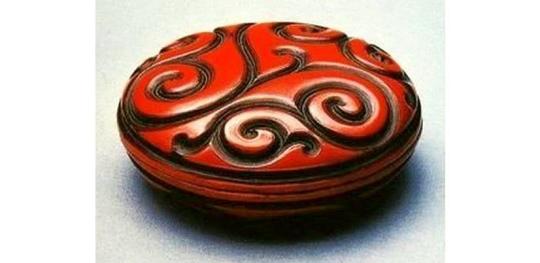
¹⁴Habōki [羽帚].
This would have been a habōki made from feathers that were between 9-sun and 1-shaku in length -- the kind of habōki that are most commonly seen today.

It is not possible to say what kind of feathers were used -- though, given the setting, they would have been the most beautiful and interesting feathers available. (While ordinary habōki were usually used only once, habōki made from rare and precious feathers were often preserved, and used again on those rare occasions when such habōki would be appropriate.)
¹⁵Su [ス].
Su [ス], which Tachibana Jitsuzan uses consistently in his version of this kaiki*, actually suggests the kanji mata [又], meaning “and again.”
The meaning is that the utensils that follow were not displayed in the room. They were brought out from the katte at the beginning of the temae. ___________ *In his original copy of the kaiki (which was made with the original Shū-un-an documents in front of him), the kanji mata [又] actually occurs much more frequently. The decision to convert all of the instances where this kanji is used to the katakana su [ス] was, therefore, done for some specific reason -- which, however, Jitsuzan never elaborated upon. (It is speculated that he may have wished to make the text seem more mysterious than it actually is.)
¹⁶Handa ni te hi wo irete [ハンタニて火ヲ入].
Handa [半田]* literally means tin or lead solder, and seems to have been a slang term for a sort of small earthenware vessel in which solder was melted (this is the only occasion where Rikyū uses this word of which I am aware). Imai Sōkyū's version uses the word handa-donabe [半田土鍋], which literally means a shallow earthenware pot in which solder was melted. In his other writings, Rikyū usually uses the word hōroku [炮烙], which means a similarly-shaped earthenware vessel (albeit one used in the kitchen for baking -- as in a system resembling a “Dutch oven,” where a second inverted hōroku is placed over the hōroku containing the food that is to be baked -- or parching food).

Rikyū's hōroku (the surviving example was made for him by Chōjirō) is shown above. It is 7-sun in diameter, and so a little larger than the modern haiki (the shape of which are usually copied from it).
The hōroku was filled about half way full with shimeshi-bai [湿し灰]†, and after the ash was leveled, three burning gitchō were stood on top, and so carried out into the room (with a pair of hibashi resting across the rim of the hōroku, with which the charcoal was moved into the furo). __________ *The kanji used for this word are hentai-gana. They have no literal meaning.
†Shimeshi-bai [湿し灰] means damp ash.
According to Rikyū's densho, ordinary ash is dampened with clean water until it forms a rather hard, brick-like mass. After allowing the ash to sit for a while (so that excess water will be lost), it is placed in a (special heavy paper) sack that was used for boiling medicinal herbs, and the sack was then struck forcefully against a board, causing the ash to fragment into a mixture of small pieces of various sizes. It was used as it was (with only any large pieces picked out). According to Rikyū, the shimeshi-bai was prepared just before it would be used.
This is very different from the way the modern schools teach to prepare shimeshi-bai.
¹⁷Unryū nure-gama ni te kakuru [雲龍ヌレ釜ニてカクル].
When Hideyoshi and the other guests entered for the shoza, they found a furo resting on the ō-ita, containing a full set of charcoal (but with an open space in the middle of the arrangement). Rather than performing a sumi-temae, after the usual exchange of greetings, Rikyū brought out a hōroku containing three burning pieces of charcoal. After dusting the furo with the habōki, he moved the hōroku in front of the furo, and lifted the three pieces of charcoal into the center of the charcoal arrangement. Then, after dusting the furo again, he placed the incense onto the charcoal.
He returned the hōroku to the katte, and came back carrying the (wet) small unryū-gama, and rested it on the gotoku that was arranged in the furo.

This was the second small unryū-gama, which had “matsu-gasa” kan-tsuki* and an iron lid. So the lid would have been dampened as well.
After placing the kama in the furo, Rikyū would have dusted the rim and shoulder of the furo again (the lid of the kama would have still been wet), and then used the habōki to dust the utensil mat, from the front of the ō-ita to its lower end, while the guests inspected the kōgō. ___________ *Far from resembling pine-cones (as the name suggests), they are semi-circles, albeit with a scale-like pattern (and probably intended -- the original kan-tsuki featuring this kind of design are seen on a Korean kama and bronze furo that was owned by the Hosokawa family -- to suggest coils of a dragon, or some such motif).
¹⁸Shiru hiba [汁 干ハ].
Hiba [干葉] are the dried leaves of the daikon*. The dried leaves are reconstituted by soaking in water, and then cut into pieces before being put into the soup.
The soup was miso-shiru. __________ *Daikon is traditionally sold (in the wet market) with the leaves intact -- since the dark green and crispness of the leaves indicates that the root was freshly dug (the leaves wilt and then begin to turn yellow after a day or so; and as they wither, they draw water out of the root, making it tough). The leaves are generally lopped off in the market, so the customer will not have to deal with the waste at home.
Since the wet markets generally closed around noon, poor people would often come by to collect these leaves, which they took home and dried (by draping them over a clothes line strung up across the kitchen garden, with the crown above and the leaves dangling below). This also helped the market stall with clean-up.
Like many other things (such as dengaku, and mugi-meshi [麥飯] -- see the next footnote), what was originally the province of the very poor had now, rather perversely, become a sort of delicacy savored by the upper classes.
¹⁹Mugi no gohan [麥ノ御食].
Mugi-meshi [麥飯]* means white rice that is mixed with a certain amount of barley (mugi [麥]) before the grains are steamed.
As mentioned in the the commentary that accompanied the translation of the previous gathering, barley was usually planted around the end of the year (since it grows best when the temperature of the soil is around 0° C); thus the barley harvest would have been taking place around the time of this chakai, so Rikyū may have decided to serve mugi-no-gohan as a sort of seasonal delicacy†. __________ *This word can also be pronounced baku-han [ばくはん = 麥飯], and mugi-ii [むぎいい = 麥飯].
†The Japanese also seem to believe that barley is good for the body during hot weather. This is still seen today, when iced barley tea (mugi-cha [麥茶]) -- with a touch of salt (to help the body replace what is lost through persipration) -- is hugely popular during the post-rainy-season heat wave.
²⁰Namasu [ナマス].
This is a sort of salad, usually made from julienned daikon and carrot, dressed with a mixture of rice vinegar, sake, mirin, and soy sauce.
²¹Sashimi mana-katsuo [サシミ マナカツホ].
Mana-katsuo [真名鰹] (shown below) is a distant relative of the katsuo [鰹]. This fish has white flesh (whereas katsuo is pink to red in color), and is very oily. Accordingly, while delicious, people are generally cautioned not to eat too much of it, or it can cause digestive problems.

The sashimi would likely have been served with iri-zake [煎り酒]* as a dipping sauce -- though it is also possible that a shallow dish of precious soy sauce might have been offered to Hideyoshi. __________ *Iri-zake [煎り酒] is a sort of dipping sauce prepared from “old” sake (the “dregs” of the sake-cask, which had lost a lot of its alcohol through evaporation -- which occurs each time the cask is opened).
First, a piece of dashi-kombu is soaked in the room-temperature sake for several hours (to deepen the taste), then removed. Then several ume-boshi are placed in the sake, and the sake is brought to a boil. After about 5 minutes, a large handful of katsuo-bushi is thrown in to the sake, and it is allowed to continue simmering until the volume is reduced by half. Then (as when making dashi) the pot is removed from the heat and allowed to cool for five minutes while the katsu-bushi settle (waiting too long will result in too strong a taste). Then the clear liquid is decanted off (and filtered through a piece of sarashi).
This is the iri-zake, and it was used as a dipping sauce after it was fully cooled.
²²Ni-mono [煮物].
Ni-mono means foods cooked (and usually -- though not always -- served) in clear broth. Unfortunately, Rikyū does not mention what the ingredients were, or how they were served.
Rikyū seems to be making an effort to keep the meal as light as possible, on account of the heat (since overeating on a hot day would make the guests feel lethargic).
²³Iri-kaya ・ kuri [イリカヤ ・ クリ].
These were the kashi.
Iri-kaya [煎り榧] are the roasted nuts of the Japanese allspice tree (also sometimes called the Japanese nutmeg yew -- Torreya nucifera).
And kuri [栗] probably refers to yaki-guri [焼き栗], chestnuts roasted over charcoal.
²⁴This word is not found in the Enkaku-ji version of the text. Go [後] (meaning the goza), however, is implied by the listing of the utensils, which follow.
As for the kane-wari:
- the scroll continued to occupy the toko by itself, meaning the toko remained han [半];

- meanwhile the room had only the ō-ita furo*: though, in addition to the kama-furo, the hishaku and futaoki were also arranged on the ō-ita (with the latter two utensils arranged on the opposite side of the furo from where the kōgō and habōki had been placed, meaning that the cup of the hishaku came into contact with the central kane) -- whereby the ō-ita, and so the room, was counted as chō [調].
Han + chō is han, which is correct for the goza of a chakai held during the daytime. __________ *As explained above, in the sub-note under footnote 8, the furo was probably placed on the left side of the utensil mat, as shown above, because Hideyoshi preferred things to be done in that way. The orthodox arrangement, however, is shown below.
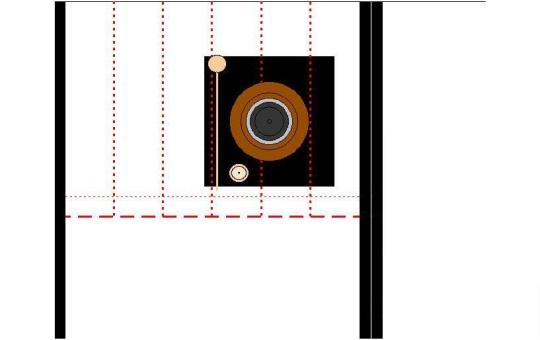
In this case, the hishaku and futaoki are placed on the left side of the furo, with the hishaku (still) contacting the central kane.
The details of the kane-wari remain the same.
²⁵Toko sono-mama [床 其儘].
That is, the scroll remained hanging by itself in the toko, just as during the shoza.
²⁶Ō-ita no hashi ni hishaku ・ hikkiri [大板ノ端ニヒシヤク ・ 引切].
The hishaku and futaoki were arranged on the ō-ita together with the furo, with the handle of the hishaku parallel to the side of the ita closest to the center of the mat.

The futaoki was one of Rikyū’s take-wa [竹輪] (the word hikkiri [引切] was probably added by Tachibana Jitsuzan, since this was the word preferred by chanoyu practitioners who were members of the samurai caste).
²⁷Mizusashi tsurube, Same-ga-i no mizu irete [水指ツルベ、醒ヶ井ノ水入テ].
The mizusashi was a kiji-tsurube.

It contained water that had been drawn from the Same-ga-i that dawn.
Traditionally, the kiji-tsurube was sealed by passing a paper tape through the hole in the crossbar (the “handle,” by means of which a pair of tsurube were suspended from ropes tied to opposite ends of a shoulder-pole, for transport to the mizuya), which then circled the body of the tsurube, with the two ends pasted together on the side that would face the guests (the side with the movable lid). This was to “guarantee” that the water, drawn at dawn, had not been tampered with. Before the tsurube could be opened, the tape had to be cut off with a small knife. However, since Hideyoshi is known to have objected to the presence of even this small blade in the tearoom, Rikyū probably removed the tape in the katte (if one was even applied to the tsurube -- which would have been guarded in the katte by two of Hideyoshi’s personal bodyguards, along with the food and all of the other utensils -- on this kind of occasion).
The kiji-tsurube was not brought out from the katte until the beginning of the koicha-temae. (While in the small room, the host should keep his comings and goings to a minimum, in a large room -- the room was of 6 mats -- carrying out the various utensils in an elegant manner before the eyes of the guests was an important part of the atmosphere.)
When the kiji-tsurube is used, the rule is that the host should walk onto the utensil mat* bearing the tsurube, squatting down in front of the space where it will be placed, and so lowers it to the mat directly (without moving it around once it has come into contact with the surface of the tatami). Then, at the conclusion of the temae, the tsurube should be left in situ until after the guests have left. These things were done because the bottom of the kiji-tsurube was usually wet (due to water seeping through the wood), and so inclined to leave unsightly marks on the mat if it was moved away from a spot†.

Since the kiji-tsurube was not displayed on the utensil mat from the first, as was the usual way of doing things, the fact that it was kept under guard in the katte likely explains why it was not brought out (without a sealing tape) until the beginning of the koicha-temae. In the Enkaku-ji version (shown above), this entry is marked with a red spot, indicating its importance (likely also emphasizing the reason why it was not brought out until later -- this mark can be seen at the beginning of the thirteenth line from the left, which I have indicated by an arrow above the line in the original document**). ___________ *The ancient rule was actually that neither host, nor guests, should ever walk (or stand) on the utensil mat.
In the case of other kinds of mizusashi, the host walked into the room and then sat down at the lower end of the utensil mat (placing the mizusashi down forward of his knee, on the side of the mat adjacent to the wall), and moved forward to the temae-za on his knees (advancing the mizusashi forward in front of himself in steps).
However, because the kiji-tsurube was wet, an exception to this rule was made because the correct way of doing things was not possible (since it would leave a water mark each time it was set down, making the mat look messy).
Sōtan used only a kiji-tsurube as his mizusashi for most of his life. Thus, when he was suddenly called upon to use something else (when he made tea for the imperial consort Tōfukumon-in and her court -- at which time he was in his 50s), he, out of habit, handled the mizusashi in the same way as he had done when using a kiji-tsurube -- since he forgotten (if he had ever known) that there was this point of difference. This (like much else) is where the modern way of doing things originated.
†Modern kiji-tsurube are generally sealed, on the inside, with silicon sealing-compound, so they will not leak. While lacquer and pitch were both available in Rikyū’s day (which would have given excellent results), using them to seal the tsurube was considered impure. Therefore, the kiji-tsurube was held together only with the pressure of the iron nails with which it was held together; for which reason it almost always leaked, at least to a certain extent. Inadvertence, therefore, dictated this special dispensation from observing the rules.
**The entire entry, from the Enkaku-ji manuscript, is shown at the beginning of this post. Here I have focused in on the final part of the kaiki, following the second “su” [ス]. The line in question reads: ﹆ hitotsu mizusashi tsurube same-ga-i mizu irete [一 水指ツルヘ醒ヶ井ノ水入テ] (where “﹆ “ is the notation that I have been using for the red spot that was used -- presumably by Rikyū, according to Jitsuzan -- to indicate the special features of a chakai; hitotsu [一], which means “one” indicates each individual part of the entry, which I have indicated by a small circle “◦” in my translations).
²⁸Chaire ko-natsume [茶入 小ナツメ].
This was a plain, black-lacquered ko-natsume.
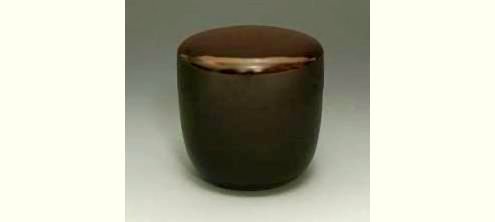
It was most likely tied in a shifuku.
²⁹Chawan Hikigi-no-saya ・ ori-tame [茶碗 引木のサヤ ・ 折タメ].
This is a (low quality) Korean celadon tsutsu-chawan*, with the type sometimes referred to as kyōgen-bakama [狂言袴]† in Japan.
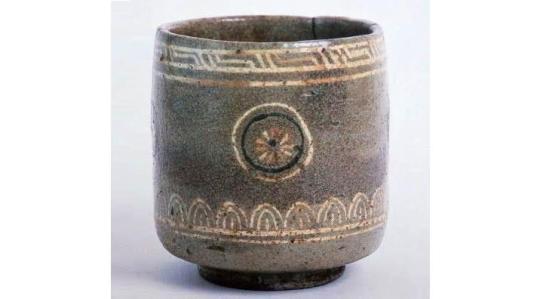
While it seems strange (to us) that a deep chawan would be used at the beginning of the hot weather that follows the end of the rainy season, this kind of bowl actually allowed Rikyū to make the tea cooler than usual‡, the deep bowl preventing the koicha from cooling further (to the point where the tea would become too thick to drink).
The chashaku -- an ori-tame [折撓] made by Rikyū -- was rested atop the chawan, with the chakin and chasen were arranged inside it, as usual.

__________ *In the kaiki that makes up Book Two of the Nampō Roku, as Tachibana Jitsuzan wrote it, Rikyū sometimes refers to this chawan by its name (Hikigi-no-saya [引木の鞘]), and sometimes descriptively (as the Mishima zutsu [三嶋筒]).
The early “Mishima” pieces, and Korean celadons, were fired at the same kilns, and fabricated from the same clay and glaze. The only difference between them is the color the glaze assumed during firing (when the glaze was blue or green, the piece was called celadon, and was considered to be of higher quality; when the glaze came out a milky-gray, or was almost colorless, the pieces were judged to be of lower quality -- and this was the pottery that came to be referred to as “Mishima” in Japan).
†Kyōgen-bakama [狂言袴] means the kind of pleated skirt worn by the performers of kyōgen [狂言]. Similar to the nō [能] drama (and usually included -- as “comic interludes” -- in the same program), kyōgen were lighter, humorous pieces (the word kyōgen literally means “crazy talking”); and they were generally not performed in costume.
The round circular designs and decorated borders of this type of bowl resemble the crests that adorned the kyōgen players’ hakama.
‡By this point in the year, the tea leaves (which had been harvested and processed the year before) will have become very weak: thus, the water used to prepare the koicha must be as cool as possible. Using a deep chawan prevents the already (relatively) “cool” tea from cooling further, helping to insure that the guests can drink the tea precisely as the host made it.
³⁰Koboshi gōsu [コホシ 合子].
A gōsu [合子 -- originally written 盒子] is a kind of lidded bowl in which offerings of rice or water were made to the Ancestors in Korean jesa [제사 = 祭祀] ceremonies. In the early days, only perfect sets of utensils could be used for these ceremonies; and if one piece was lost or damaged, the entire set was melted down and recast. However, occasionally, when these were pieces of especial quality (such as utensils from sets made for use by the king’s family), the court officials through whose hands they passed on the way to the founder sometimes kept some of them back, and used them for other purposes -- the earliest “sets” of kaigu* were composed entirely of just such repurposed utensils.

While the gōsu was originally used on the daisu as a koboshi with its lid (and Furuta Sōshitsu states in his writings that he used it in that way, even when he used the gōsu as a koboshi during temae when the daisu was not present)†, it is uncertain whether Rikyū followed this kind of precedent -- or simply used it without a lid, like an ordinary metal koboshi. __________ *The shaku-tate was originally one of a pair of flower vases; the mizusashi was originally a vessel in which “white sake” that was used for Ancestral offerings was kept; the futaoki was a rest for the dipper that was used to scoop “white sake” out for a libation; and the koboshi was either the vessel into which the libation was poured (the shape of koboshi that the Japanese refer to as efugo [餌奮], which means a bag in which the small, plucked birds used to lure hawks back to the fist were kept), or one of the ritual covered bowls (gōsu [盒子]), as here.
†The original rule was that, when displayed on the daisu, the gōsu must never be empty. Thus, before taking it out into the room, a hishaku of cold water was poured inside.
And, during the service of tea, unlike other koboshi, the gōsu remained on the daisu (all other kinds of koboshi were lowered to the mat at the beginning of the temae, and placed next to the host’s leg) -- the cold water it contained preventing the gōsu from becoming hot enough to damage the lacquer.
At the end of the temae, the gōsu was removed, cleaned, refilled with one hishaku of cold water, and then returned to the daisu.
The way some modern schools teach to remove the lid of the bronze mizusashi -- taking it off, wiping away any drops of water while holding it over the koboshi, and then leaning the lid against the front of the mizusashi with the knob facing forward -- is actually the way that the lid of the gōsu was handled. (In the gokushin temae, the lid of the mizusashi is actually placed flat on the ji-ita of the daisu, either in front of the mizusashi, or on a diagonal from it -- if the lid is too large to fit in front.)
When Furuta Sōshitsu used his gōsu, even when he was not using the daisu, he always did so with the lid in place, and with a hishaku of cold water inside, and carrying it out with two hands. When the daisu was not being used, Oribe placed the gōsu next to his leg, and leaned the lid against the side of the gōsu facing toward the temae-za.
³¹Imai Sōkyū, in what is purportedly his account of this chakai (the entry is found in his tea diary*), states that the group moved into the shoin for usucha, writing: “after tea was finished, [we] went out [into] the shoin, where [we] partook of o-usucha; [then] the two people intoned their poems” (o-cha no ato, shoin [h]e deru, o-usucha meshi-agarare, ryō-nin [h]e eika hi ōse-sōrō [御茶ノ後、書院ヘ出、御薄茶召上ラレ、兩人ヘ詠哥被仰候]). No mention of this important point is not found in Rikyū's kaiki; though Sōkyū’s account fails to mention that this change of venue was so that Hideyoshi (and the others -- surely including himself) could take turns performing an usucha-temae†.
While this detail certainly accords with what seems to have been Rikyū's “usual” way of staging things whenever Hideyoshi was present at a chakai (assuming that the venue had a shoin available), a number of other points mentioned in this document conflict with Rikyū's own version‡ -- meaning that either the account given in Book Two of the Nampō Roku, or the version presumably** recorded by Sōkyū in his diary, is (at the very least) suspect. Furthermore, if the group really did move on to the shoin after koicha was finished in the six-mat room, neither Rikyū’s kaiki, nor Sōkyū’s record, for that matter, describes any of the utensils that were arranged in the shoin -- and, necessairly, the set of things would have had to be both extensive and expensive: in addition to a daisu and kaigu, and chawan and tea container(s††), such a setting would require a kakemono, something arranged on the chigai-dana, a book of poetry or other objects displayed on the dashi-fu-zukue (the built-in writing desk that adjoined the jō-dan where Hideyoshi would have taken his seat when not performing) and so forth. __________ *The (fragmentary) document known as the Imai Sōkyū Chanoyu Nikki Nuki-gaki [今井宗久茶湯日記抜書].
†When Rikyū served usucha (as he may have done on the present occasion -- since even if he planned for Hideyoshi and the others to enjoy performing an usucha-temae in the shoin, this would not preclude him from doing so), he usually did so during the koicha-temae, using the tea remaining in the chaire for this purpose -- so it would not go to waste (once used for koicha, the tea could not be used for this purpose again on a later occasion; and for use as usucha, the tea would never be fresher than during the koicha-temae for which it had been ground). Serving thin tea during a separate usucha-temae does not seem to have been his way of organizing the gathering -- except, as here, when it was planned for one of the guests to be doing the temae. (For the host to officiate at a separate usucha-temae follows the format of the chakai used during Jōō‘s middle period. It, however, seems that he repudiated this kind of practice during his last year, possibly under the influence of Rikyū -- who had just returned from a prolonged stay in Korea, and presumably was imitating continental practices in these simplifications.)
‡The Enkaku-ji version of this kakik found in the Nampō Roku has Rikyū arrange the furo on an ō-ita; while, during the goza, the tea container was a small natsume, and the chawan was the Korean Mishima tsutsu-chawan known as Hikigi-no-saya [引木の鞘].
Sōkyū's account, however, has Rikyū using a naga-ita, on which (in addition to the furo) are arranged a [kiji-]tsurube mizusashi, a shaku-tate (not otherwise described), and a bamboo futaoki; while the chaire used during the goza was the “Mossō” [物相] (presumably the chaire that Rikyū called Konoha-zaru [木の葉猿]), and the chawan was a dai-temmoku (the kind of temmoku is not described further, but Sōkyū mentions that the dai is an Amagasaki-dai [尼カサキ臺 = 尼ヶ崎臺]).
Also, in this version, the second of the two poems offered to Hideyoshi by the guests is ascribed to Sōkyū, rather than to Kuroda Yoshitaka (as in Rikyū’s account).
**Unfortunately, neither of these documents exists in the original.
The Enkaku-ji manuscript of the Nampō Roku is (at best) a second-generation copy (and there are a number of differences even between Jitsuzan's original copy, which he made with the Shū-un-an documents in front of him, and the text as he wrote it in the notebooks that he presented to the Enkaku-ji).
As for the Imai Sōkyū Chanoyu Nikki Nuki-gaki, as the title says, the text consists of “selected excerpts” from Sōkyū's tea diary, originally copied, and presumably edited (albeit for private use) in Bunsei 3 [文政三年] (1820), by Takenami-an Kyūsō [竹波庵休叟] (the chajin Inagaki Kyūsō [稲垣休叟; 1770 ~ 1819). The text was then recopied in Bunsei 5 (1822) by a person who styled himself Furyusai Yoshikyō [不流齋良恭; dates or other details unknown]. And his text was subsequently prepared (for publication as a facsimile edition, meaning a careful hand-copy, reproducing his text exactly, was taken, from which the wood blocks were then cut) by Watanabe Shinryū [渡邊信立; otherwise unidentified] in Kōka 4 [弘化四年] (1847).
††Possibly a different tea container was prepared for each of the guests to use during his temae.
Both Hideyoshi and Kuroda Yoshitaka had studied chanoyu with Rikyū, while Sōkyū had studied with Jōō. Hideyoshi might have enjoyed noticing the differences between Yoshitaka’s and Sōkyū’s temae; and preparing a new tea container for each of them to use would have “leveled the playing field,” so to speak.
³²Usucha ha ue-sama hajime, o-shōban tomo ni men-men ni o-tatsuru-sōrote sankō [薄茶ハ上樣ハシメ、御相伴トモニメン〰ニ御立候て參候].
Nothing is said about the utensils that were used for the service of usucha -- though, if it was indeed served during a separate temae, the tea container (at least) would have had to be changed (since a ko-natsume could never hold enough matcha for three portions of koicha, plus potentially six or eight bowls of usucha afterward; and, mechanically speaking, reusing the ko-natsume for usucha would be more troublesome for the guests, since they would have to continue pulling the tea out, rather than scooping, as was more usual).
³³Yūsai, nigori-naki kono mi-yo tote ya ashi-biki no yuwa-i no mizu mo yasuku-sumuran [幽齋、濁なき此御代とてや足引の巖井の水もやすくすむらん].
Hosokawa Yūsai, as the man of letters, chanted his poem first: “in this enlightened age, even the water in a well dug on the edge of a cliff is not easily exhausted.”
Nigori [濁] means muddied, turbid, dirty, and, by extension, (socially/politically) corrupt. Nigori-naki [濁なき] means lacking in these negative qualities.
Miyo [御代] means a period or age; reign. Yūsai is referring to the land under Hideyoshi's rule. Tote ya [とてや] means something like "even this!" or "even now!"
Ashibiki no [足引の], as a phrase, implies something like or related to a mountain (such as “resting on a mountain” or “leaning against a mountain”); though the precise meaning has been lost (the expression is first found in the ancient Manyō-shu [万葉集], but by the middle ages the exact meaning was no longer known). It apparently describes the state or nature of the (subsequently mentioned) iwai [巖井].
Iwai [巖井], while a place name in Kyūshū, literally means a well that was dug on a cliff-face. Such a well is naturally both shallow, and holds a very limited supply of water.
Yasuku-sumuran [安く済むらん]: yasuku [安く] means easy (to do something); sumuran [済むらん] means not used up, not consumed.
The verse praises the enlightened prosperity of Hideyoshi's rule.
³⁴Yoshitaka, yorozu-yo no koe mo kyō yori mashi mizu no kiyoki nagare ha taeshitozo mou [孝高、万代の聲もけふよりまし水の清きなかれハ絕しとそ思ふ].
After which Kuroda Yoshitaka offered his verse: “the voices of the myriad generations [raised in praise] further amplify (those of) the present day: saying that the flowing of pure water will never cease, I believe.”
Yorozu-yo no koe [万代の聲] means the voices of the ten-thousand generations, the voices of all generations. Here koe [聲] seems to mean voices raised in cheers of praise or joy.
Kyō yori [今日より] means beyond (that of) the present day. Mashi [増し] means to increase.
Thus, “the voices of the myriad generations [were raised] to join those of today....”
Mizu no kyoi nagare ha [水の清い流れは] means “with respect to the pure (kiyoi [清い]) flow (nagare [流れ]) of the water (mizu [水])”: flowing water is an allusion to passage of the generations (of Hideyoshi’s family), flowing into the future.
Taesu [絶えす] means to cut, cut off, cease (in this context, it would refers to ones progeny dying out); while taeshitozo [絶えしとぞ] means ceaselessly, without an end (Hideyoshi’s line continues forever).
Mofu [思ふ], or mou [思う], is a classical contraction of the word omofu / omou [思 ふ, 思 う], primarily found in poetry (apparently when there are not enough syllables to go around), and refers to the thoughts of the poet (Kuroda Yoshitaka).
In other words, he is saying that the voices of past generations would be added to those of the present: proclaiming that (like the well in Yūsai’s poem that is never exhausted), the water (in other words, the future generations of Hideyoshi’s family) will continue forever.
³⁵Konnichi ryō-nin [h]e eika-sōrō ōsetsuke, soku-seki ni yomi hi mōshi-sōrō [今日兩人ヘ詠哥候仰付、卽席ニよミ被申候].
This means that on this occasion (literally “today”), immediatly after the two poets (among the three attendants) had finished composing their verses, they immediately recited them. In other words, they probably did not even take time to write their verses down: it appears that they spontaneously gave them voice after considering for just a few moments.
The waka, as a poetic form, is intended to be chanted aloud, not simply spoken, nor read (with the eyes). And Rikyū seems intent on emphasizing the fact that the poems were completely spontaneous. This differed from the sort of format employed on more formal occasions, where the poets excused themselves to consider their verses, and then came back at an appointed time to present their polished efforts. Here it was the raw spontaneity that was offered for Hideyoshi's appreciation.
5 notes
·
View notes
Text
Denkare - カギロイ (Kagiroi) (Eng. Translation)
カギロイ - Kagiroi
Artist: 電気式華憐音楽集団 (Denki Shiki Karen Ongaku Shuudan / Denkare) Lyrics: 華憐(Karen) Composer: syu
Audio: https://www.youtube.com/watch?v=dg1RBDFP6ys
English/Rōmaji/Lyrics under the cut
English:
In the recesses of a back alley, a tunnel of light shines from inside a water fountain Beyond where it comes out, floating above the fountain, is a nameless castle of the dead
While knowing the wish is impossible, I still foolishly "wish" for it again and again Sitting down by the window I murmur
"Ah! I want to see you"
The azure princess lamented, holding up the jade stones inlaid in the diadem And informed him of this
"You mustn't be noticed"
Coming back to life for just one night, I ran as fast as I could to the girl Regretting that I wasn't able to see her
One last time
The lace by the window, shaking and dancing in the parched wind In the moonlight, your sleeping face continued to gently shine
I was always sitting down at the window, listening to your voice Though I can never hear it again I'll place down my amulet instead Even if you wake up, I hope you won't cry
Thank you "I'm so happy you came for me" I'll deliver you this "I'll never forget you"
I wake up to a faint voice "Let's meet again sometime" The tears that followed were somehow wiped away from my cheeks, the charm swaying In the chair by the window are a black cat's whiskers and a deep crimson ribbon
-------------------------------------
Rōmaji
Rojiura no sumi kagayaku funsui no oku hikari no tonneru Nuketa sono saki izumi no ue ni ukabu na mo naki shisha no shiro
Kanawanu negai to shirinagara oroka ni ikudomo "negau" Madobe ni koshi wo oroshite tsubayaku
Aa aitai yo
Ao no hime wa nageki oukan no rin ni hamekomareta hisui no Ishi wo kazashi kare ni kou tsugeta
Kizukarete wa ikenai
Hitoyo no aida ikikaetta boku wa ichimokusan ni shoujo no Moto he saigo no toki aenakatta koto
Koukai shiterunda
Kawaita kaze ni odotte yureugoku madobe no reesu ni Tsuki no hikari ga sashikomi kimi no negao wo yasashiku terashi tsuzuketa
Boku wa itsumo mado ni koshi wo oroshite kimi no koe wo kiiteta Nido to kikenai keredo kawari ni boku no omamori oiteyuku yo Me ga sametemo kimi ga nakanai you ni
Arigatou "Boku no moto kitekurete ureshikatta" Todokete "Itsumademo kimi no koto wasurenai yo"
Kasuka na koe ni me wo samasu "Itsuka aou" Tsutau namida nazeka hoho no tochuu de fukitorareteita tama yurayurari Madobe no isu ni wa makkuro na neko hige to shinkou no ribon
----------------------------------
歌詞
路地裏の隅輝く噴水の奥光のトンネル 抜けたその先泉の上に浮かぶ名も無き死者の城
叶わぬ願いと知りながら愚かに幾度も“願う” 窓辺に腰をおろして呟く
嗚呼会いたいよ
碧の姫は嘆き王冠の輪に嵌め込まれた翡翠の 石を翳し彼にこう告げた
気づかれてはいけない
一夜の間生き返った僕は一目散に少女の もとへ最期の刻会え無かった事
後悔してるんだ
乾いた風に踊って揺れ動く窓辺のレースに 月の光が差し込み君の寝顔を優しく照らし続けた
僕はいつも窓に腰をおろして君の声を聞いてた 二度と聞け無いけれど代わりに僕の御守置いてゆくよ 目が覚めても君が泣かないように
ありがとう ”僕のもと来てくれて嬉しかった” 届けて “いつまでも君の事忘れないよ”
微かな声に目を覚ます“いつか会おう” 伝う涙何故か頬の途中で拭き取られていたたまゆらゆらり 窓辺の椅子には真っ黒な猫ヒゲと深紅のリボン
--------------------------------------
Notes:
Kagiroi can refer to either the shimmering of hot air, or a light at daybreak
It's a very unusual song layout, with not much in the way of "traditional" structure. It's also very dependent on its indentation, as much of the quoted bits in the Romaji/English are only indicated via indentation in the original lyrics (even though some of the original lyrics are *also* quoted).
This song was performed unplugged in an acoustic live show in 2017 (video for that show is here, concert starts at about 1:28:00) and a recording of that was included on the Prima Dynamis single (unfortunately that track doesn’t seem to be included with the rest of the album on Youtube)
0 notes
Text
WHAT A JOURNEY IT HAS BEEN

After Graduation, nag-enroll na agad kami sa Review Center. Saturday and Sunday yung review sesh naming sa Tagaytay. Ayon yung pinili kong schedule kasi ang original plan ko, magpapart-time ako during weekdays. Reason kung bakit gusto ko magtrabaho ay para narin syempre may sarili akong pera, nahihiya na ko sa parents ko syempre graduate na ko technically dapat nagtatrabaho na pero dahil may board exam, kailangan ko na naman ng pera parang isang buong sem din yon. Tsaka naisip ko kung di ako papasa at least may scapegoat ako “NAGTATRABHO KASI AKO, DI AKO NAREVIEW NG MAAYOS, KAYA AKO BUMAGSAK” HAHAHA habang nag-aaral na ko nabasa ko na tawag jan sa ganyang palusot, CONSTRUCTING OBSTACLE , isa sa Safeguarding Tendency ni Tito Alfred Adler or pwede ring EXTERNAL LOCUS OF CONTROL ni Pareng Julian Rotter kasi isisisi ko pa sa outside force ang future pagbagsak ko or di kaya RATIONALIZATION ni Lolo Sigmund Freud. Pagtapos ko matutunan yon, sinabi ko sa sarili ko “MAGFOFOCUS AKO SA REVIEW! AYOKONG BUMAGSAK! AYOKONG MAGKAROON NG REGRETS SA FUTURE NA BUMAGSAK AKO DAHIL SA DI AKO NAGREVIEW OR GUMAWA AKO NG SARILI KONG OBSTACLE.”
That day, nabuhay ang katawang lupa ko! GAME FACE ON. Naghoard ako ng mga notepads na iba-ibang kulay, highlighter, manila papers, markers and other school supplies and kaartehan ko sa pag-aaral (washi tapes, cutie sticky notes, assorted gelpens, etc.). Gusto ko kasi every review sesh ko , nag-eenjoy ako. Halos every 2 weeks, nag-guGroup review sesh kami nila Yanyan at Kia, yun rin yung time na magsstock kami ng school supplies, “UY! NBS TAYO HA? UBOS NA BALLPEN KO..UBOS NA YUNG…” Sa Coffee Bean & Tea Leaf madalas yung sesh namin kasi don yung peaceful talaga , we spent maximum of 6 hours don and minsan sa SB , nakakapulubi grabe! HAHAHA Pero iba rin kaya yung feels kapag wala ka sa loob ng bahay niyo nag-aaral. Syempre dahil coffee shops yon, less higa at kung anu-anong ritwal pag nasa bahay ka. Masaya yung feeling na nasshare mo sa kanila yung part na alam mo and at the same time nadadagdagan yung alam ko dahil sa mga inputs nilang bago plus HOTTEST CHIKKA. HAHAHA Matik na, kasama yung #GirlTalk. Mas stress out na talaga, nagsisine kami pag may budget pa.

SOLO REVIEW SESH
Naki-usap ako sa parents ko na gagawin ko ng totoong kwarto yung tinutulugan ko. Hindi kasi ako makapagfocus kapag sa baba ako nag-aaral. Pinalagyan ko ng table at upuan don. Ginawa ko talaga studyspo #2 (kasi may studyspo naman ako sa baba), member rin ako ng studyblr kaya madaming study tips and learning styles ang nakukuha ko at nasshare ko rin. Habang tumatagal yung review, mas kumakapal yung papers at reviewers ko. Thank you kay Papa, siya yung gumawa ng DIY divider ko dahil nanghihinayang ako bumili at alam ko naming crafty yung tatay ko at ako nalang yung nagdesign. Thank you rin kay Mama, lagi siyang sinusunod yung gusto kong ulam, nagtitimpla lagi ng gatas (kahit may lactose intolerance ako) pero pinipilit ko kasi kailangan, tagabili ng snacks ko at nakapa-alala sakin na MAGPAHINGA. Sa ate at kuya ko na hindi ako pinagawa ng gawaing bahay, salamat sa inyo! Kahit na alam kong minsan nagseselos na rin kayo, Sorry.
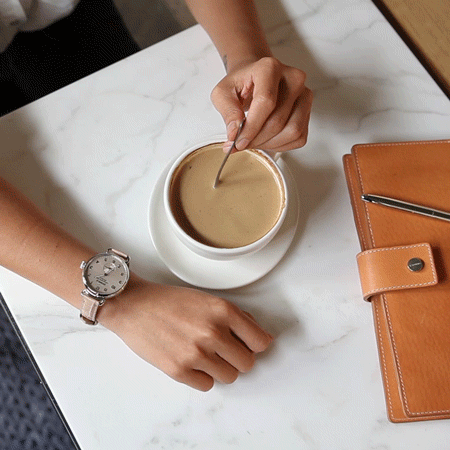
Sa pagrereview ko natutunang kumapit sa kape. Sinabi ko noon, ayoko abusuhin yung kape dahil gusto ko magagamit ko siya pag kailangan na talaga, which is nangyari nga. Salamat sa mason jar ko, sa mga iba’t ibang ice coffee mixture na naimbento ko HAHAHA Medyo nakuha ko na nga yung lasa ng MEXICAN CHOCOLATE ng CBTL HAHAHAHA CHOS.
Review Routine
*Ito yung sample ng typical day ko nung review pero syempre di naman ako robot, nagdedeviate rin ako sa schedule ko.
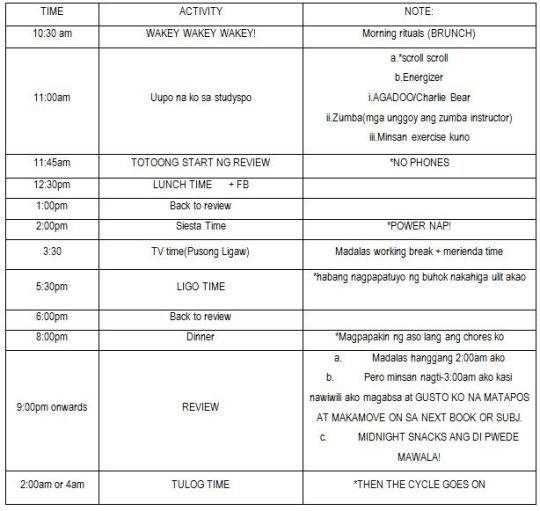
*** Technically, 7 to 8 houuuurs parin naman tulog ko. HAHAHA mas gusto ko lang mag all-nighter kasi tahimik na yung paligid mas nakakatulong makapag-absorb ng infos.
Bago pala ang pagrereview ko magstart, hinanap ko sa baul yung college notes/reviewers na mapapakinabangan ko pa. Itinabi ko talaga yung mga yun para sa future use which is ito na nga. Inalam ko yung effective na learning style sakin. Ang colorful ng notes ko nung college at gumagawa talaga ako ng reviewers para sakin at para sa tropa.
Kaya bumuo ako ng strategy na gagawin ko sa pag-aaral para hind maging boring!
Para mas madali akong makapag-aral, naging mas organize ako. Nagcolor coding ako sa 4 SUBJECTS NG EXAM.
PINK for Theories of Personality
ORANGE for Psychological Assessment
YELLOW for Abnormal Psychology
GREEN for Industrial/Organizational Psychology
Lahat ng files inayon ko sa kulay na yan. Folders, notepads, ballpens, highlighters at sticky notes. May nabasa kasi ako na mas maganda nag anon para ma-train yung brain natin.
Nagdikit ako sa pader ng kwarto ko ng mga “NOTE TO SELF” “REMINDERS” “GOALS” and others. Yung Monthly calendar ko may mga events at plan na tapos yung nilalagay ko sa bulletin board ko ay yung WEEKLY TASKS na dapat kong maacomplish then may reward every week! REWARD YOURSELF. Yung mga gagawin ko pang nextweek nakasked na agad yan para alam ko yung free time ko kung may ganap.
Sa first month ng review ko, umasa ako sa online lectures ng isang site tapos gumawa ako ng reviewer at print ko. Helpful yung online lectures na yon kasi pag may hindi ako nagets pwede kong i-backward or i-pause, learning at your own pace talaga! Yung moment na yon parang warm-up muna bago ako sumabak sa totoong pagrereview.
Yung next 2 months ng review sesh ko, ONE SUBJECT PER WEEK talaga ginagawa ko. Ayon yung naisip ko para madali akong makatapos ng e-books. **E-BOOKS LANG ANG MERON AKO WALA AKONG PHYSICAL BOOKS , BAWAL NA KAMI MANGHIRAM SA LIBRARY NG SCHOOL E. Tsaka wala naman ako mahihiraman. Thank you sa mga sites n may free downloads ng e-books. Oo, masakit sa mata mag e-books kasi iba talaga pag real books.
THEORIES OF PERSONALITY by Feist & Feist 7th Edition, FIRST EVER PSYCHOLOGY BOOK NA NABASA KO SA BUONG BUHAY KO. One week natapos ko siya, SOBRANG PROUD NA PROUD AKO SA SARILI KO NON! Tapos nagdrills ng TOP sa review center, mataas yung nakuha kasi syempre nabasa ko na yung book. Grabe. Nakagraduate ako ng college at may Latin honor pero di ako nakapagbasa ng buong book HEHEHE umasa lang sa powerpoints at book chapters HUHUHU kaya medyo nakasisis na SANA PALA NUNG COLLEGE NAGBASA NA KO NG BOOKS EDI SANA RE-VIEW AT REFRESH NALANG ANG NAGAGANAP NGAYON. After ko nung book na yon, na-hooked ako sa mga theorists na yon! Nakakainspire yung stories nila at yung hugot nila sa buhay kaya nahirapan ako magmove-on! HAHAHA parang gusto ko nalang magTOP nalang palagi. Basa then sulat ng notes simultaneous kong ginagawa. Mas maraming senses ginagamit mo mas tatak daw sa utak e. Mas madaming senses gumagawa, mas effective mas pagod ka. HAHAHA After non sinunod kong basahin yung book ni Schultz & Schultz, then medyo madaliang basa kina Engler at kay Owen na books.
PSYCHOLOGICAL ASSESSMENT by Kaplan & Sacuzzo una nong book na binigyang pansin. GRABE! Nakakalula. Ito yung mas nakakaiyak na part kasi hirap talaga ako sa subject na to. Yung mga parts na kaya ko yung inaral ko uli tapos nagskip ako sa mga di ko ganong gets like regression and mga parametrics sabi ko sa review center ko nalang yon iintiindihin. Nagbasa rin ako ng book ni Cohen, Urbina, at Coaley. THE MORE THE MERRIER. AYON SABOG BRAIN CELLS KO HAHA.
ABNORMAL PSYCHOLOGY, yung kay Barlow & Durand talaga una kong sinubukan pero hanggang chapter 8 lang ako, napagod ako! Kaya lumipat ako kay Comer 9e, YEHEY! Dahil sa ganda ng pagkaka layout ng book niya, mas na motivate ako matapos yon. Nagbigay pansin rin ako sa buong DSM IV TR, one round ng basahan lang at lecture notes. Sabi ko no time na ko sa DSM 5 tutal medyo familiar naman ako dito, DSM 5 MADE EASY na book nalang binasa ko. Tapos nagsagot na ko ng mga drills online. Dito ko narealize na sooooooobrang daming information tapos 100 items lang yung sa exam!? HUHUHU ang liit ng chance na lalabas yung inaral mo. Minsan swertehan talaga.
INDUSTRIAL/ORGANIZATIONAL PSYCHOLOGY book ni Michael Aamodt ang binasa ko probably ng most test takers HAHAHA ito yung pinaka comprehensive na I/O book na available this time e. Magaling mag explain si Aamodt, first person kasi. Pero dahil feel ko ang unfair sa I/O na isang book lang binasa ko then sa other subjects 2 or more, nagsearch pa ko ng ibang helpful na books, then nakita ko yung book ni Landy, binasa ko rin siya pero hindi tulad ng ginawa kong pagbabasa kay Aamodt.
*Yung nga authors ng book, surname basis na lang kami e LOL
Sinasabi nila na ang sipag ko daw, paano ko natatapos agad yung books na yon. Pero nakakatawa mang isipin , hindi ko rin alam. HAHAHA pero di naman laging sipag lang, napapagod rin ako at umiiyak. Pero lahat ng iyak ko, patago. Ayokong Makita nila na nahihirapan na ako. Dumating sa punto na, sobrang sakit ng likod ko, yung leeg ko di ko nailingon na naman ng maayos (**may cervical kyphosis ako, yung spine ko sa leeg in reverse since 1st year college until now nag-iintake parin ako ng meds**), nagrerereview ako ng may neckbrace. Gusto ko na magpahiinga pero di ko ginagawa kasi alam ko paghuminto ako, saying yung time. Di ko magagawa yung task sa day na yon. Nagdadasal lang ako pag ganon na. Thank you, Lord.
Kapag napapatagal yung browse at scroll ko sa social media at panonood ng TV, naguguilty ako tapos sasabihin kong “ TAMA NA TO! AYAW MONG BUMAGSAK DIBA? MADAMING TIME PARA JAN, AFTER BOARDS TSKA KA MAGGANYAN!.” then ang alarm ko sa phone nakalagay “GUSTO MO PUMASA DIBA? BUMANGON KANA!”
DISCIPLINE YOURSELF.
Tuwing nawawalan ako ng pag-asa or malapit ng sumusuko, iniisip ko nalang kung bakit ako kumakapit.
AYOKO KONG MADISAPPOINT YUNG SARILI.
AYOKONG MADISAPPOINT YUNG IBANG TAO lalo na yung pamilya ko.
Gusto patunayan na KAYA KO!
Gusto ng additional valid ID !
Gusto ko tumulong sa iba AT MAGKAROON NG AMBAG SA SOCIETY.
LASTLY, nandito na ko e, LALABAN AKO!
May kasabihan nga na “NASA TAO ANG GAWA, NASA DIYOS ANG AWA” kaya naman I prayed harder. Kay God ako unang kumapit at humingi ng guidance. Dinagdagan ko yung mga Saints na dinadasalan ko. Nagsearch ako, nakita ko si Saint Joseph of Cupertino. He is the patron saint of air travelers, aviators, astronauts, people with a mental handicap, test takers and poor students. Since then, every night ko na siyag dinadasalan. September 18 yung feast niya, 9 days before yung day na yon, nag novena ako sa kanya. Tapos 9 days before yung BLEPP nagnovena ulit ako sa kanya.
Other Saints na noon ko pa dinadasalan at kinapitan ko rin ng mahigpit during the boards ,
o Our Lady of Lourdes- Patroness of those who are Sick
o St. John Paul II- patron saint of youth
o St. Anthony of Padua- patron saint of lost things
o St. Jude Thaddeus- patron saint of desperate cases and lost causes/ The Patron Saint of the Impossible
o St. Martha- patron saint of active, practical women, servants & cooks
o St. Agustine (Tata Usteng)- patron saint of brewers,
o St. Padre Pio- Patron saint Adolescents, Stress relief
o St. Teresa of Avila- patron saint of headache sufferers
o Ina ng Laging Saklolo- Patron Saint of the Sick, Police, Paratroopers and Grocers
Saturday and Sunday ang review naming sa review center. Pag hindi ako nagmamadali ng sabado, umaattend ako ng Healing Mass sa Our Lady of Lourdes Church sa Tagaytay, walking distance lang naman from review site e. Pero consistent yung every after review every Sunday na nagtitirik kami ng kandila sa Candel Chapel ng Our Lady of Lourdes (Green candle for good studies) Nakilala na nga kami ni “Ate” na tagabantay sa candle chapel e. After magtirik, umuuwi na sila. Nagsstay ako para magsimba tuwing 6:00pm tapos si Kia naman sa Victory ng Serin nagsisimba tuwing 6:00pm , after ng mass nagkikita nalang kami at sabay na uuwi.
Sobrang laking part ng OUR LADY OF LOURDES PARISH CHURCH sa tropa namin at sa sarili ko personally since college days. Unang beses kaming nagpunta sa simbahan na yon, last day of school ng first year 2nd sem, tandang tanda ko pa nakaneck brace pa ko non kasama ko yung first squad ko. Simula non, nagging panata na naming yon. Every after ng semester, naglalaan talaga kami ng time para magpunta don, magtirik ng kandila at magdasal. After ng boards, yung first Sunday non bago lumabas yung results, nakabalik na ko sa Lourdes para magsimba at magtirik ng kandila. This time, we’re planning na buong squad bumalik doon pra magpasalamat.
WHAT I DID before boards:
1) I STUDY HARD AND PRAY HARDER. Specific lagi yung dasal ko “LORD, LET ME PASS THE BOARD LICENSURE EXAMINATION FOR PSYCHOMETRICIAN THIS OCTOBER 29&30 THIS YEAR 2017. HELP ME. GUIDE ME TOWARDS THIS JOURNEY. SANA RIN PO 100% PASSING RATE, PUMASA KAMING LAHAT KAHIT HINDI PO AKO MAGTOP BASTA PUMASA KAMING LAHAT LALO NA PO YUN TROPA NAMIN PERO KUNG DI NAMAN PO PWEDE NA LAHAT KAMI SANA PO YUNG MGA TUNAY NA NAGSUSUMIKAP AT NAGSISIPAG ANG UNAHIN NINYO.”
2) NAGTASA AKO NG LAPIS SA LOOB NG SIMBAHAN. Sabi ng mga previous testtakers at lecturers ng review center, ipinatasa daw nila yung mga lapis nila sa previous topnotchers or mga previous passers or sa mismong lecturer.
Sabi ko sa sarili, di ko iaasa ang pagtatasa sa iba so AKO MISMO NAGTASA NG MGA LAPIS KO. Pero what’s new sa ginagawa ko? SA LOOB NG SIMBAHAN KO ITO TINASAHAN KASABAY NG PAGDADASALA KO. Patago pa yung pagtatasa ko before magstart ng mass at pagtapos ng mass. One month before ng boards, first Wednesday ng October, nagpunta kami ni Mama sa Baclaran. Nagsimba kami sa Ina ng Laging Saklolo, doon ko unang ginawa ng pagtatasa ng mahiwagang lapis. Next, last day ng review naming after non nagsimba ako tulad ng dating gawi, sa Our Lady of Lourdes sa Tagaytay, doon ko ginawa yung next lasa gaming ko. Lastly, ditto sa Parish ng subdivision naming kay Saint John Paul II, before magstart yung misa nagtatasa ako. By the way, yung mga pinagtasaan ko nasa iisang plastic yon, at dinala ko yon sa mismong day ng exam, nilagay ko siya sa bulsa ng uniform ko sa may dibdib katabi ng rosary ko.
Oooops! Di pa pala don nagtatapos ang tasa story, night before ng exam dumalaw sa condo naming yung isa naming prof si Sir A, lecturer rin siya ng review center RPm at RPSy, may dala siyang pantasa, tatasahan daw niya pencils namin. Nagsecond thoughts ako kasi tasado na pencils ko at gusto maniwala sa kakayahan ko sa pagtatasa LOL pero dahil kinabahan ako at wala naman masamang maniwala, kunuha ko yung isang lapis na hindi ko natasahan sa mga simbahan at ayun ang inabot ko kay Sir A.
All in all, APAT NA LAPIS ang ginamit ko during the exam, para di magtampo ang mga lapis kada 20 items na masasagutan ko nagpapalit ako ng pencil. HAHAHAHA
3) SONGS FOR MY SOUL PLAYLIST. Kapag nawawalan na ako ng motibasyon kakareview at feeling ko susuko na ko, ito yung pinapatugtog ko, di ko alam kung napapansin to ng iba sa IG stories ko. Gumawa talaga ako ng playlist sa spotify na puro worship & catholic songs. **nagSpotify premium ako for 3 months** HAHAHA Kung wala ka ng makapitan, kumakapit talaga ko sa mga songs na to. Uplifting kasi. Thaaankyouuu!
Here are few of the songs included in that list:
- Anima Christi (fave)
- Seek Ye First (fave)
- Take & Receive
- With All I am
- God Will Make a Way
- Ang Panginoon ang Aking Pastol
- One More Gift
- Tell the World of His Love
Pag normal days naman, instrumental songs lang pinapakinggan ko kasabay ng pagbabasa ng e-books. Yung walang lyrics para di ako makakasabay HAHAHAA
4) IPINA-BLESS YUNG LAHAT NG GAGAMIT KO SA BOARD EXAM, TAKE NOTE LAHAT!. Mgasususotin at gagamitin ko for two days! Uniform, sapatos, footsocks, lapis, ballpen, bra, panty, snacks and others. Si mama nagsabi nito, siya rin nagpush, ganon rin kasi ginawa nung firned niya na may anak na magbboard exam at nakapasa!
5) WHITE UNDIES. Sabi don sa review center, red panty daw ang swerte. Number 1, wala akong red panty. Number 2, wala akong balak bumili ng bago. Number 3, gusto ko gumawa ng sarili kong agimat.
White pinili ko kasi ayon yung kulay ng panty na mayroon ako na dalawang piraso. White means purity so I took the chance, pure yung heart ko na pumasa at pure yung intentions ko so I wear white. Thanks to my white panty, I passed!
6) An apple a day keeps the memory loss away( ako na nagbago ng saying na to HAHAHA) ’. Nung naggrocery kami day before the boards, nagpunta ako sa fruit section ng supermarket, bumili ako ng 2pcs. Na apple. Isa to sa weird kong ginawa at pinush kong kumain rin yung mga tropa ko nung breakfast time namin before yung exam. Nabasa ko kasi noon na Apples boost the brain by protecting against memory loss and lowering the occurrence of strokes. Dahil kinakabahan ako baka magka memory loss at itakihin sa kaba, pinush ko yung apple. Hiniwa yung apples, shinare ko sa squad. Hanggang Day 2, ginawa ko yon. J Thank youuuu, Apple <3
7) GOYA BITS & NIPS...YAKULT.. PIYAYA… Thank you!
8) OFFERING A SHORT PRAYER BEFORE, DURING and AFTER of every subject in the board exam.
Before the exam, nung binigay na yung form, pinagdasal ko lahat at nagging friendsly ako sa test papers and all (advised ni Dean), I prayed and I lifted all my worries to God. During the exam, kapag may questions na talagang di ko alam, I prayed n asana tumama yung wise guess ko. Kapag naririnig ko na yung tibok ng puso ko sa kaba, nagdadasal ako. After the exam, I’m so happy na nakita ko yung chapel ng UE Manila sa 2nd floor nung pababa ako right after ng 1st subject ng exam. Medyo konti yung taong nandon, I went there…I kneeled and prayed. Tapos before magstart yung next subject, I went there again and touched the saints (St. Jude Thaddeus & St. Therese) then sign of the cross. Basta ayon yung nagging routine ko sa two days ng exam. Yung pinaka last day at natapos ko na yung last subject, agad agad akong lumuhod don at bigla na kong naluha. Naluha ako kasi feel ko naalis na yung tinik sa dibdib ko. I’m done!
BLEPP DAY 1
Mga 4:00am na kami nagising nung Day 1, nagising ako na luto na ang almusal dahil maagang gumising si Ichan. Unang naligo at nag-asikaso sina Kia at Arriane dahil sa UE Caloocan silang dalawa. Ako na yung nagprepare ng palalagay ng lunch sa mga baunan namin. Binaunan narin naming sina Yanyan at Bianca ng lunch. Lahat nagmamadali nung araw na yon. First time ko sumakay gamit yung Uber App, thanks to Grace! HAHAHA Pagdating naming sa UE Manila, GRABE! Ang haba na ng pila, halos 30 mins rin kaming naghintay para mag-open yung gate. Pagpasok naming, agad agad na kaming naghiwa-hiwalay. Nagtanong ako sa isang usherettes …
Me: Kuya saan po yung SFC Building?
Kuya: This way po, akyat lang kayo jan.
Sabay kaming umakyat ni Grace, pero naghiwala rin kami kasi siya ay sa 3rd floor at ako ay sa 4th floor. Pag-akyat ko sa 4th floor, mga 6:28 na yon, eh 6:30 dapat nasa rooms na kami. OMG! Ang room ko ay ROOM 400, yung part na sinabi ni kuya na akyatan ko ay sa Room 420 nagsimula! YUNG BLDG. PALA NA YON AY PA-IKOT! Grabe yung takbo na ginawa ko para mahanap yung room 400!!! Hingal na hingal ako, buti nalang mabait yung proctor sa room ko, pinapasok ako habang yung iba nagsusulat na! Thanks God!
Hindi pa nagsstart yung exam proper, haggard na ako. HAHAHA *inhale exhale…inom tubig*** OKAY, I’m good! Nagdasal ako at nagsimula na yung exam.
THEORIES OF PERSONALITY, first subject.
Natuwa ako dahil nandon ang Trinity ( Freud, Jung at Adler) Tapos sinamahan ni Kelly, Erickson at konting Klein. Kung may tanong na sure kang tatami ka, may tanong naman na talagang mapapatanong ka na, NABASA KO BA TO? Elimination ang naging technique ko sa mga tanong na ganon at odd man out. May hope sa theories of personality, out of 100 mga 30-40 items ang di ko SURE AS IN then yung other items sure ako at wise guess talaga. Mga 30mins before yung time natapos ako, dinasalan ko uli yung answer sheet ko at pinasa ko na. Pagbaba ko doon ko nakita yung chapel ng UE, himinto ako don saglit at nagdasal.
Lunch break, sabay sabay kami naglunch ng tropa. May Packed lunch kami, prenipare nung maga tapos ako nagbiibit nung lunch nung iba.
Konting chikahan lang at tanungan ng sagot ng mahina dahil bawal! HAHAHA After lunch, dumaan uli ako sa chapel bago bumalik sa room.
PSYCHOLOGICAL ASSESSMENT , second subject.
One hour bago ang time ng PsyAss, nagpapahinga nalang ako sa room at nagdadasal. HAHAHA Normal lang, walang kaba kaya ako kinakabahan kasi di ako kinakabahan yun yung feeling!
Pagkatanggap ko ng questionnaire ng Psych Assessment, NAGDASAL AKO ULIT. Grabe ito yung exam sa hindi talaga sapat yung 3 hours sa 150 items, nakakaawa yung brain cells ko that time, wala akong ma-retrive na sagot, gusto nang umiyak. THAT WAS THE SHORTEST 3 HOURS OF MY LIFE. Ni hindi ako makakain ng snacks ko. Ang dami kong erasure sa answer sheet, mga more than 10 siguro. Out of 150 items, less than 10 items lang ako 100% akong sure na tama ako. Nakakapanghina ng loob, yung mga topics na akala nyo sure win na lalabas ( like reliability, validity, normal curve, z-scores) WALA! WALA KAHIT ISANG POINT MAN LANG. Alam mong mahirap talaga yung subject dahil nung TOP ang subject, after an hour may natapos na agad! This time, halos lahat sinagad yung 3hours! Natapos ako mga 10minutes before the time, wala na kong balak i-review dahil wala rin naman akong magagawa dahi di ko na alam. Nagdasal nalang ako. Tapos after ko magpasa, dumaan uli ako sa Chapel ng UE sa 2nd floor, medyo naluluha na ako non.
Then nagmeet-up kami ng tropa with others, pati sila nanlulumo sa nangyari. Nagtatawanan nalang kasi feeling naming walang content validity yung exam at content underrepresentation ang naganap. Doon bumaba yung confidence naming na kakaunti na nga lang, mababawasan pa! Ako, si ichan at Grace ang magkakasabay umuwi sa condo, medyo naligaw kami at nagroadtrip! Di na kami nag uber para tipid ayon cutting trip kami buti nakauwi kami HAHAHA
Pag-uwi sa condo, nag-iyakan sila habang ako naghuhugas ng plato at lunchbox naming, sinasabi ko lang na “walang susuko hangga’t di pa tapos ang laban dahil may bukas pa!”
Gusto ko rin umiyak that time, pero walang lumabas sa mga mata ko. Sabi ko irereserve ko nalang mga luha ko pag-uwi ko bahay.
Medyo mas maaga kami natulog that night. Saglitang browse ng notes pero matatamlay parin kami.
BLEPP DAY 2
LAST DAY OF THE BATTLE.
Mas peaceful na sa gate dahil alam nan g bawat isa yung rooms nila. Ako rin, alam ko na yung best way para di ako tumakbo papunta sa room ko. Dumaan ako saglit sa chapel, at tumungo na sa room.
Abnormal Psychology na !
Sa apat na subject, ito talaga yung subject na may lumabas sa nireview ko. Walang diagnosis, halos puro etiology talaga. Mga 30-40 items rin hindi ko ganong sure, pero pwede! After non, dumaan uli ako sa chapel then lunch break then resume na.
Industrial Psychology, last subject.
More on Observational learning yata ang lumabas dito at mga theories of motivation. Ayos naman din pero napaisip ako kung sasabit scores ko dito kasi pag-uwi naming sa condo, nabasa ko yung tweets ng ibang test takers, nahirapan daw sila sa Industrial! Pero kaming Piyu peeps, sa psych assessment talaga super nahirapan.
Scenario sa Condo after Day 2 ng BLEP
May kakatawang nangyari sa condo dahil sa mga impulsive acts na nagpaligaya sa mga ids nila HAHAHA ayon napa-multa ng di oras. Wala ng budget for swimming sana kinabukasan. Hindi na rin makapagdinner ng bongga dahil yugn ang plans dapat. HAHA Kaya kaming dalawa nalang ni Ichan ang nag-ambagan para makapagcelebrate kahit papano. Bumili nalang kami ng bucket sa Jollibee then dinala naming sa condo. Tinry rin naming yung strawberry fries, EWWWWW never again! HAHAHA
Kinabukasan, mas prepared na yung breakfast naming. Pancakes and others pero di naming napansin yung time at dumating na si Supremo (condo owner) , check-out na pala naming kaya ayon nagmadali kami mag-ayos ng gamit at naglinis.
Before ako umuwi sa bahay, nagkita kami ng bestfriend ko, si Cybel. Grabe, mangiyak-ngiyak ako sa pagkwento sa kanya nung naging resulta. Pero nabawasan yung stress ko nung kinausap ko siya at nung sinabi niya yung side niya. Dahil sa mabigat yugn bag ko non, siya na nagbitbit nung isa. Macho talaga tong bestfriend ko e. HAHAHA
Tapos umuwi na ko, ayon ang una kong chinikka sa pamilya ko ay yung happy moments and experiences then nung sa part na ko ng exam, naiyak na ko bigla. Hirap na ko mag-explain basta nagsorry na ako kasi feel ko di na talaga papasa. Tapos tahimik lang ako, nagdinner ako then umakyat na sa kwarto ko at doon ko binuhos yung iyak ko na ilang oras ko ng pinipigil.
THE AGONY OF WAITING
Mas kinabahan ako sa paghihintay ng results kaysa sa boards. Kasi alam kong wala na kong magagawa at tapos na. Si God na yung bahala kung ipapasa nya ako or hindi.
Oo, i-aim ko rin naman magTop sa boards kasi kapag mga drills sa review center lagi akong kasama sa highest Top 5 so kahit papano naisip may laban naman. But because of how the exam turned out, napasabi talaga ako kahit di na ko magtop basta pumasa lang! SObrang okay na ako non.
Nov. 6, buong araw nag hihintay ako pero wala pa. Kaya Nov. 7, yung expected date ng released maaga akong gumising. Tapos bandang tanghali nagsiesta ako pero gumising ako wala parin. Nakakabalisa yugn paghihintay. Buti nalang madaming choices ng games sa messenger, naaliw kami kahit papano.
*hindi alam ni Mama na that day irerelease yung results, sabi ko kasi after 3 months pa, tapos na nagulat ako alam ni ate—sinearch niya pala.. kaya pala tinatanong ako “wala pa no? wala pa diba? Sabi ko “ alin? Anong wala pa?” HAHAHAHA nag-aabang rin pala siya at refresh ng refresh sa page ng PRC LOL *
So sabi ko, mga gabi to lalabas like last year. Last year yata around 11pm na yon kaya napuyat kami non tapos next day midterm exam naman ayuuuun BANGAG! HAHAHAH
*around 7pm di ko na kinaya yung kaba, sinabi ko na kay mama na that day irerelease yugn results, shoookt siya e! Tapos ayon nakikirefresh na rin siya sa page ng PRC. Hanggang sa ginabi na talaga, pinatulog ko na sila.
One hour before irelease, nagchat ni Bestie about sa kaharutan HAHA tapos ayun nag telebabad muna kami sa phone kakachikka after non umakyat na ko. Tapos kachat ko na si Yanyan.
Lights off na ko kasi sabi ko hihintayin ko habang nagkahiga. Bigla tumunog phone ko GRABEEEE! NAGTWEET NA YUNG PRC!!! 10:26 PM NAGCHAT AKO SA GC NAMIN PSYCHTIBISTAS “ FOR REAL, NANJAN NA” tapos lahat nagseen, nananhimik lang din sila na naghihintay.
Sabi ko ang una kong titignan pag release ng results ay yung Performance ng Results, then yung topnotchers then yung list of passers pero that time wala na! Topnotchers then passers na. Nasa topnothcers palang ako nagpop-out thumbnail ni Bestie “PASADO TAYO!” SHET SPOILER! WALA PA NGA AKO SA NAME KO E. KINLOSE KO AGAD YON. Tapos nagscroll ako, I WANT TO TO IT WITH MY OWN EYES… Then ayun!
575 BARRAMEDA, JAMAICA NOCUS
“PUMASA AKO!!! AKO TOOOOO!” Ayan yugn sinabi ko tapos umiyak na ko..iyak na parang walang luha na di ko malaman basta ang saya! Tapos tumakbo na si ate at mama papunta sa kwarto ko, niyakap at kiniss nila ako tapos teary eyes rin sila. GRABEEEEEE! ~Nabunutan ako ng tinik. Ang sayaaaa! After non, isa isa ko ng hinanap yung batchmates ko, 13 out of 15 ang pinalad. Highest passing rate in Cavite parin kami at may bonus pa na Top 7(si Ichan). Tapos ayon, nagvideo call si Bestie para icongrats ako, tapos naiyak kami HAHAHA tapos chinachat ko si Yanyan kasi di pa siya online then ang videocall rin kami, naiyak siya akala ko nakita na niya, tinatanong niya ako kung pasado daw siya pero ayoko siya ispoil kaya sabi ko tignan niya tapos ayooooon iyakan na naman. URGHHHHH GRABE! ANG SAYA pero partial lang kasi sa squad naming may isang di pinalad, pero we know na may better plans si God for her.
Hanggang ppagtulog ko ang saya, 4:00am na yata ako nakatulog non then 7:00am gumising ako. THAT WAS THE BEST 3 HOURS NA TULOG KO TAPOS ANG GOOD VIBES PAG GISING KO HAHAHAHAH. Pinagawa ako ni mama ng informations ko kasi daw dadalhin na niya sa mga politico na sponsors ko para mag thank you at pang tarpaulin. Grabe ang dami kong tarps HAHHAHA Ginasgas naming sa GC yung “RPm” yung mga names naming pinaglalagyan ng ganon. Halos 1 week rin akong nagrereply sa mga comments at messages nang mga taong nagccongrats sakin, famous feels CHOS HAHAHAHAH
Ni-look forward naming agad yung Testimonial Gathering at Oath taking. Gusto na ishare yung journey ko sa future RPms. Hehehe
To future BLEPP Warriors,
I am more than willing to share with you my self-made & self-compiled reviewers and practice test. Just e-mail me at [email protected]. Don’t be shy :)
THANK YOU SA LAHAT NG TAO NA NANIWALA AT SUMUPORTA SAKIN.
#psychometrician#BLEP#BLEPP2017#RPm#RoadToRPm#registered psychometrician#psych#psychology#board exam#exam#blepp#blepp story
12 notes
·
View notes
Note
any hc on goat members catching touka and kaneki going at it??
Mod K:
Ayato is the first one to catch them because his life is suffering -- and it’s nowhere near his fault. He had been strolling along the depths of the ward, exploring the layout when he heard loud gasps and moans. He’s confused and goes to investigate only to be met with a sight that he never wanted to see. “The fuck?!” He yells. “Don’t you both have rooms to do that in?!”
Nishiki would probably just throw condoms at them, not that it serves them any good now.
Yomo is so embarrassed and flustered and apologizes profusely before rushing the hell away from the both of them. He can’t look either of them in the eye.
Tsukiyama probably asks to join in and Touka nearly kills him. He had to try, though.
Naki is like “Ooooh, so that’s the way babies are made?! Looks painful.”
30 notes
·
View notes